Sambar, sambhar, Sambar recipe, Sambar without coconut, mixed vegetable sambar, south Indian sambar recipe, vegetable sambar recipe with step-by-step pictures, and video recipe. Check out the Sambar recipe and if you like the video pls SUBSCRIBE to my channel.
Sambar, sambhar, Sambhar recipe, Sambar without coconut, mixed vegetable sambar, south Indian sambar recipe, vegetable sambar recipe is a traditional South Indian style rice accompaniment prepared with a choice of vegetables, lentil, specially prepared spice powder. The detailed recipe with tips and tricks makes it a great beginner-friendly recipe for south Indian cuisine meals.
What is Sambar?
Sambar is one of the most popular traditional south Indian dishes. A good amount of protein, vegetables, blended with flavorful sambhar powder - makes it not only healthy & nutritious but also tastes delicious. In our home I do three varieties of sambhar one with sambar powder, the second is Arachuvitta sambar with coconut and the third is sambar with moong dal
What tastes best with sambhar?
Sambhar plays a key role in South Indian cuisine. Sambhar goes well with tiffin varieties like idli, dosa, uthappam, etc. It also tastes great with rice, without sambhar their no special thali/ festive/ wedding lunch / Indian lunch combo
Should I always soak toor dal?
No, it is optional but I feel soaking helps for even cooking
How much water should I add while cooking dal?
It depends on the dal you use. I generally use a 1:3 dal: water ratio. The number of whistles also depends on the dal you use.
What variety of dal should I use for sambhar.
For rice accompaniment sambar I generally use toor dal. For the tiffin variety, I sometimes use moong dal. Restaurants/hotels use a combination of toor dal and masoor dal
How much Sambar powder should I use?
I prefer using homemade sambhar powder for my sambhar. The amount of sambhar powder might slightly vary based on your spice level. If you want to make it spicy add extra Sambar powder/ Chilli powder. If you are increasing sambhar powder, you might have to proportional increase tamarind accordingly.
How to make instant pot sambar
Cook dal for 9 minutes and let the pressure release naturally. Follow the rest of the steps same for the instant pot Sambhar recipe
What kind of vegetables can I use?
You can skip the onion and make no onion sambhar. Today I have used pearl onion but you can also use big onion. Yellow pumpkin, white pumpkin, bottle gourd, eggplant, potato, sweet potato, etc. can be used for sambhar. If you are using potato add a little extra spice and salt.
What should be the texture of the cooked sambhar veggies?
Cooked veggies should be fork-tender. Always remember not to overcook the veggies. They should hold their shape and not become mushy.
Should I add the ghee tempering?
I generally use coconut oil for tempering and use little ghee towards the end. In our home, we prefer adding ghee while eating. You can use ghee according to your choice
What should be the consistency of the sambhar?
Some like thin sambar while others prefer it thick. I prefer mine on the thicker side.
Can I make one pot pressure cooker sambar or an instant pot sambar?
In our home, I prefer making sambhar in steps. Pressure cook dal, meanwhile cook veggies in tamarind water with sambar powder, add the ground mixture, and finally boil everything together. You can make one pot instant pot sambar but follow the recipe for the best result. Avoid cooking everything together
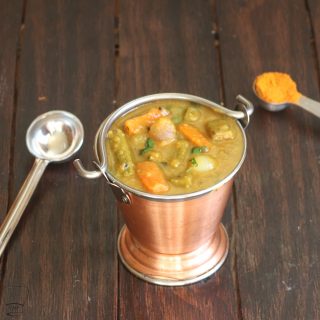
Ingredients
- 3/4 cup toor dal
- 2 + 1/2 cup water
- Pinch of turmeric powder
- 1 tablespoon oil
- 1/2 teaspoon mustard seeds
- Few fenugreek seeds
- 15 small onions
- 1 carrot
- 8 ladies finger
- 1 drumstick
- 1 + 1/2 cup of water
- Requires salt
- 1 tablespoon of sambar powder
- 2 tablespoon + 1 teaspoon tamarind paste
- 1/4 teaspoon of turmeric powder
- pinch of jaggery
- few curry leaves and coriander leaves
Instructions
- Firstly wash and soak dal for at least 1 hour
- Discard the water and add 1:3 ratio water, a pinch of turmeric powder, and a drop of oil
- Pressure cook for 3 whistles and let the pressure releases naturally
- In a wide pan add oil and when the oil is hot add mustard seeds, fenugreek seeds, and let it splutter
- Add onions and saute for 2 minutes or till onions turns translucent
- Furthermore add carrots, drumstick, okra and saute for a minute
- Add required salt and saute for 2 minutes
- Pour water and give a quick mix
- Furthermore add tamarind paste, turmeric powder and mix well
- Boil for 10 minutes, mix well in between
- Add 1 cup of water and boil for 5 more minutes
- Check if the vegetables are fork-tender also tamarind raw smell goes off then add mashed cooked dal
- Furthermore add curry leaves, coriander leaves, salt if required, hing and little jaggery, mix well, and cook for 5 minutes
- Add water and adjust the sambhar according to the consistency you desire
- Lastly, add a dollop of ghee and turn off the stove
- If sambhar thickness over time add little hot water and boil for 3 minutes and serve
Video
Notes
- I usually add toor dal for Sambhar. You can also combine toor dal + masoor dal
- Soaking dal is optional but helps for mushy cooked dal
- Adding turmeric powder and sesame oil
while cooking dal is optional, but it
helps for better cooking - I have used 1:3 dal: water ratio. Adjust the water according to the dal you use
- Alter the number of whistles according to the dal you use
- let cooker pressure come down naturally
- I have used coconut oil, but you can use any oil of your choice
- If you don’t have tamarind paste soak small lemon size tamarind and extract 2 + 1/2 of tamarind extract, use it
- I have used small onions instead, you use big onions or skip onions
- Always add dal only after tamarind the raw smell goes off and veggies are cooked
- I have used small onions instead, you use big onions or skip onions
- Use extra spice if you are using potatoes
- I have used mixed vegetables, but you can make sambar with any available vegetable
- I have used homemade tamarind paste. Adjust the quantity if you are going to use store-bought tamarind paste
- Cook veggies till they are fork-tender
avoid cooking them mushy - Adjust water according to your desired consistency
- Adjust the spice according to your desired taste
- Jaggery is optional, but it enhances sambar taste
- I used coconut oil for tempering and added a dollop of ghee towards the end instead, you can do the tempering with ghee
- Add extra water according to your desired consistency
Kuzhambu recipes in TMF
Tamarind based recipes in TMF
Other Sambar varieties in TMF
Ingredients:
3/4 cup toor dal
2 + 1/2 cup water
Pinch of turmeric powder
1 tablespoon oil
1/2 teaspoon mustard seeds
Few fenugreek seeds
15 small onions
1 carrot
8 ladies finger
1 drumstick
1 + 1/2 cup of water
Requires salt
1 tablespoon of sambar powder
2 tablespoon + 1 teaspoon tamarind paste
1/4 teaspoon of turmeric powder
pinch of jaggery few curry leaves and coriander leaves
How to prepare sambar with step-by-step pictures:
- Firstly wash and soak dal for at least 1 hour
- Discard the water and add a 1:3 ratio of water, a pinch of turmeric powder, and a drop of oil
- Pressure cook for 3 whistles and let the pressure releases naturally
- In a wide pan add oil and when the oil is hot add mustard seeds, and fenugreek seeds; let it splutter
- Add onions and saute for 2 minutes or till onions turn translucent
- Furthermore add carrots, drumsticks, and okra and saute for a minute
- Add the required salt and saute for 2 minutes
- Pour water and give a quick mix
- Furthermore add tamarind paste, and turmeric powder and mix well
- Boil for 10 minutes, and mix well in between
- Add 1 cup of water and boil for 5 more minutes
- Check if the vegetables are fork-tender also tamarind raw smell goes off then add mashed cooked dal
- Furthermore add curry leaves, coriander leaves, salt if required, hing and little jaggery, mix well, and cook for 5 minutes
- Add water and adjust the sambhar according to the consistency you desire
- Lastly, add a dollop of ghee and turn off the stove
- If sambhar thickness over time add little hot water and boil for 3 minutes and serve


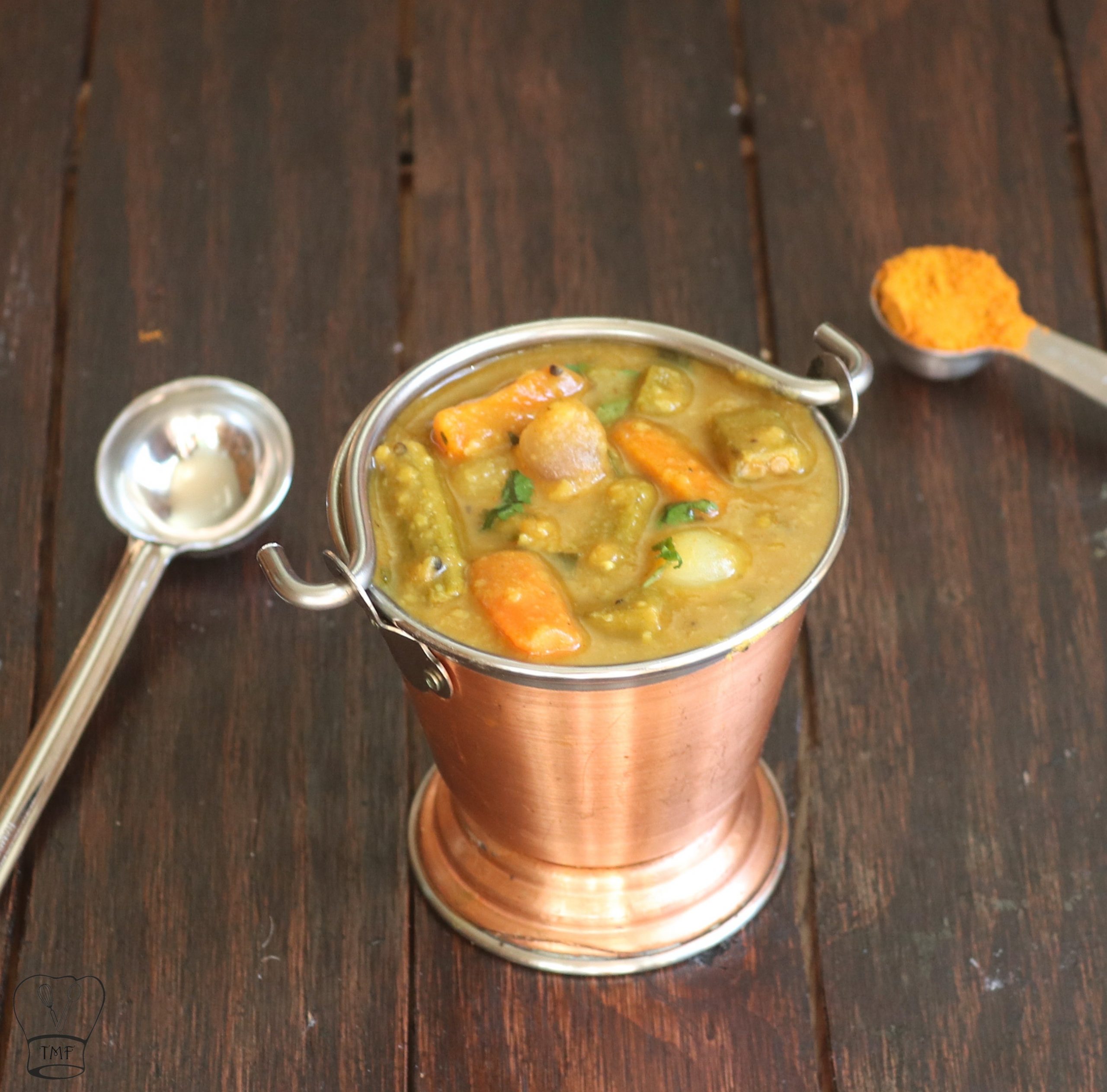
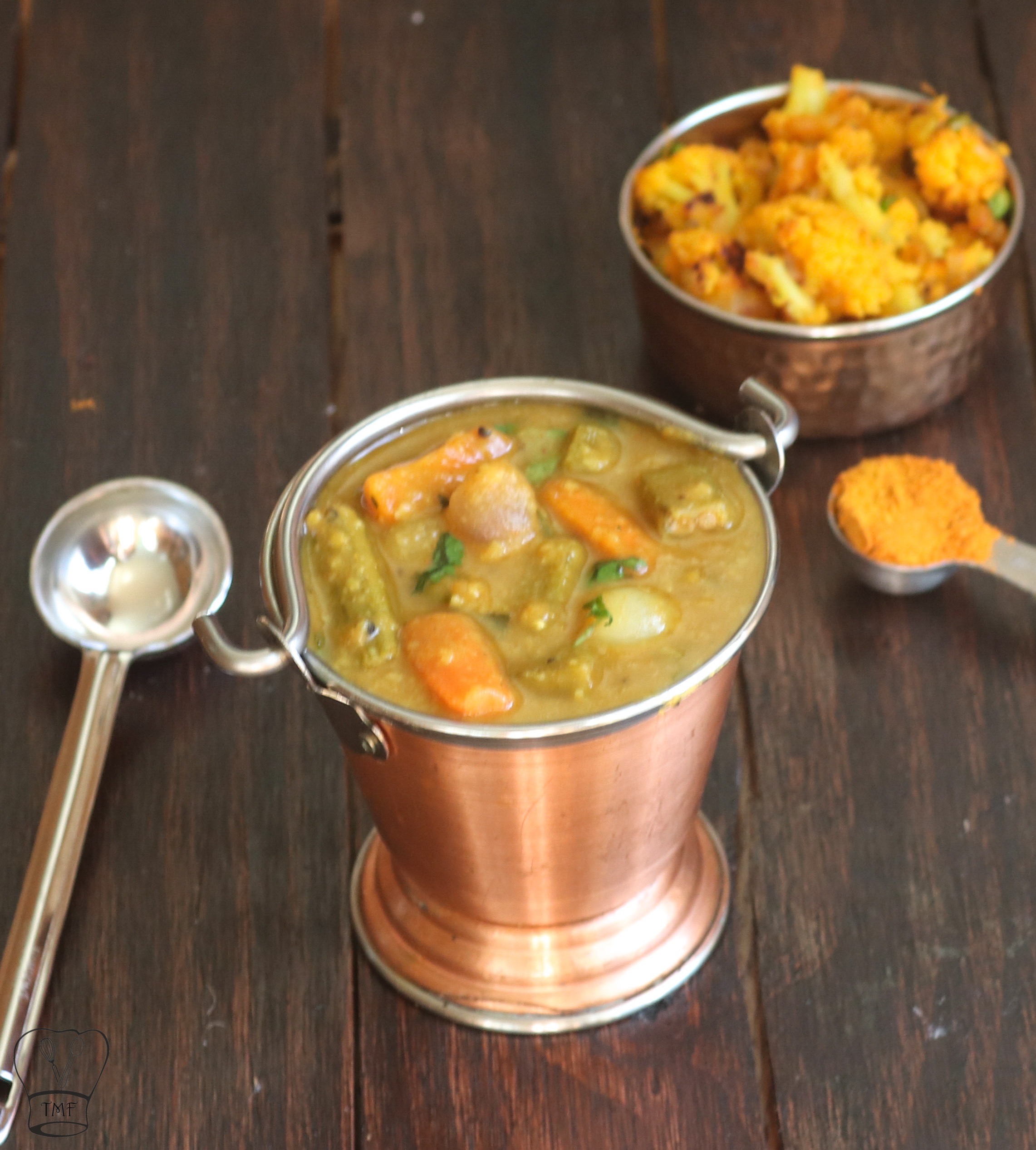
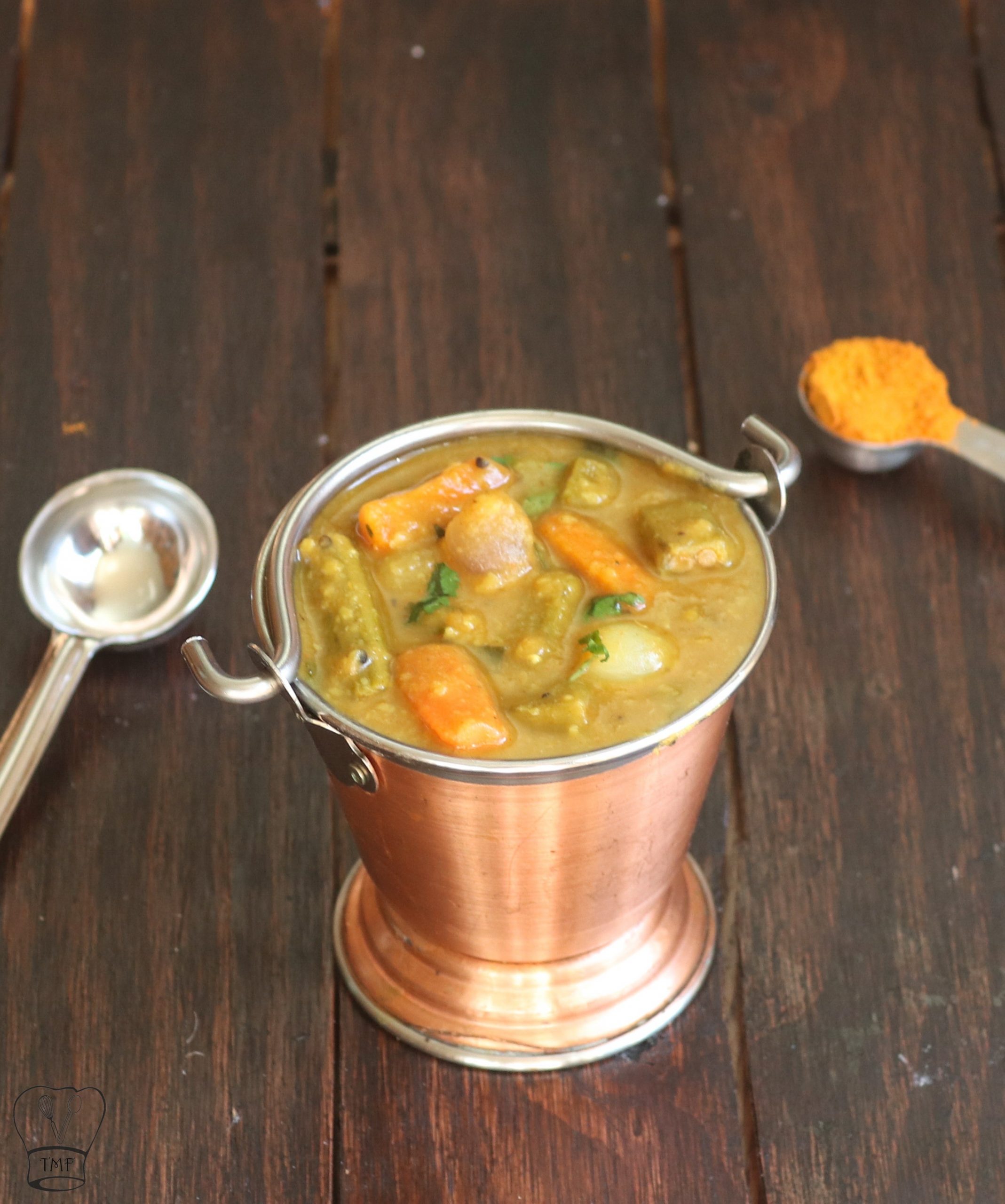
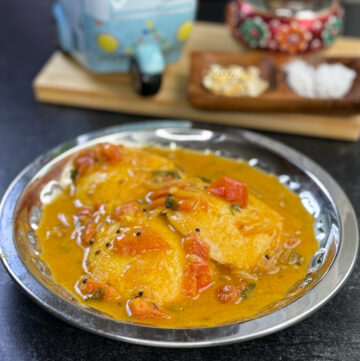

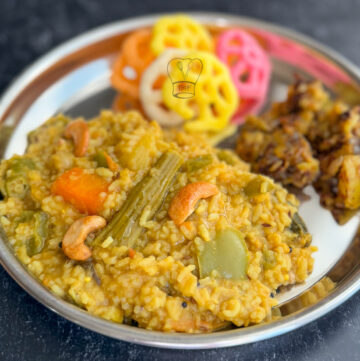
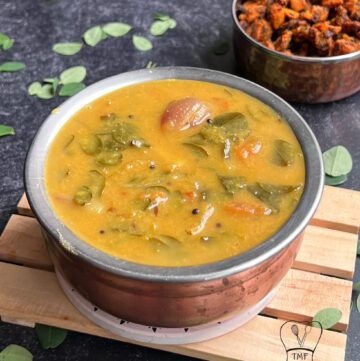
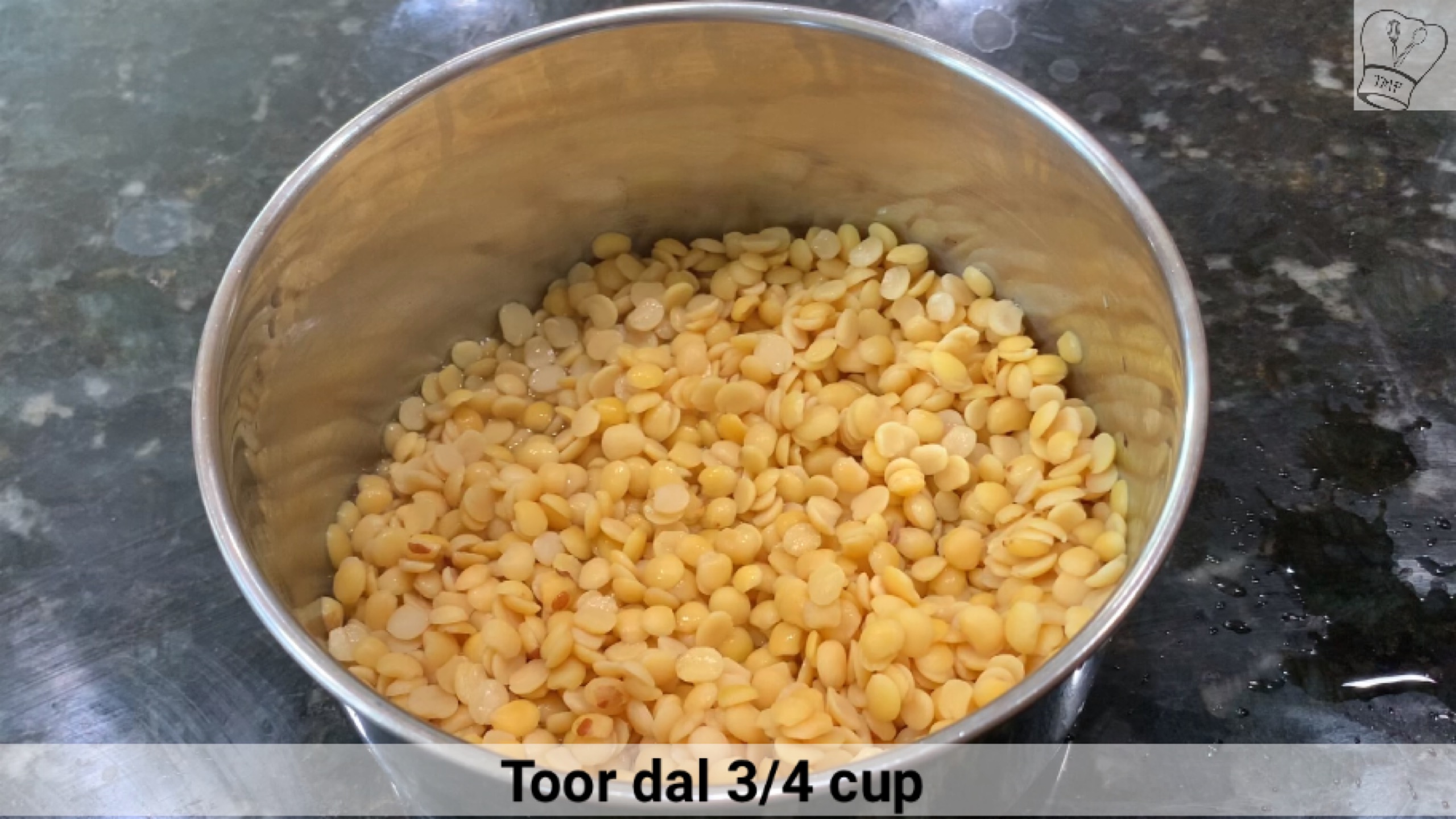
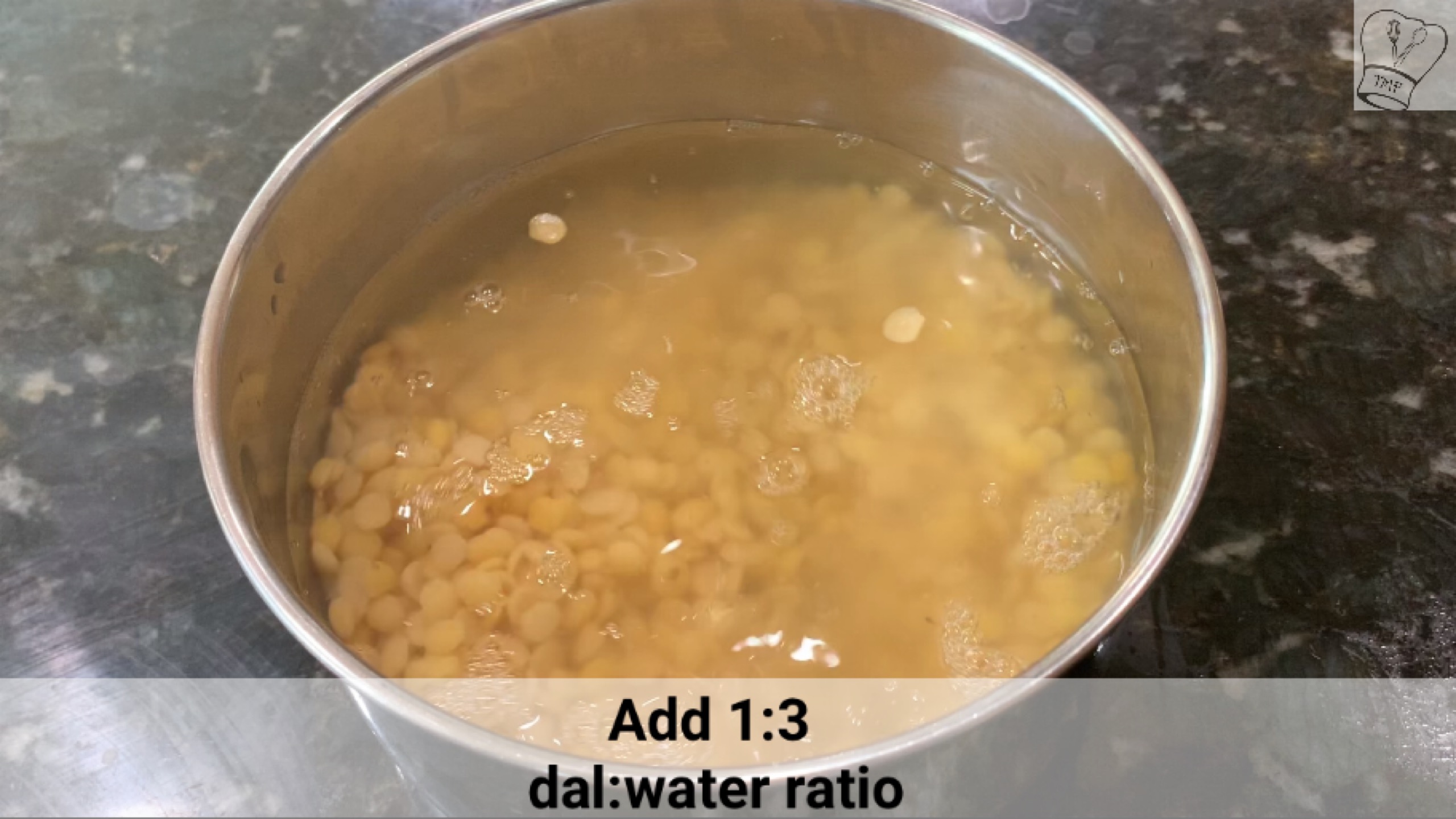
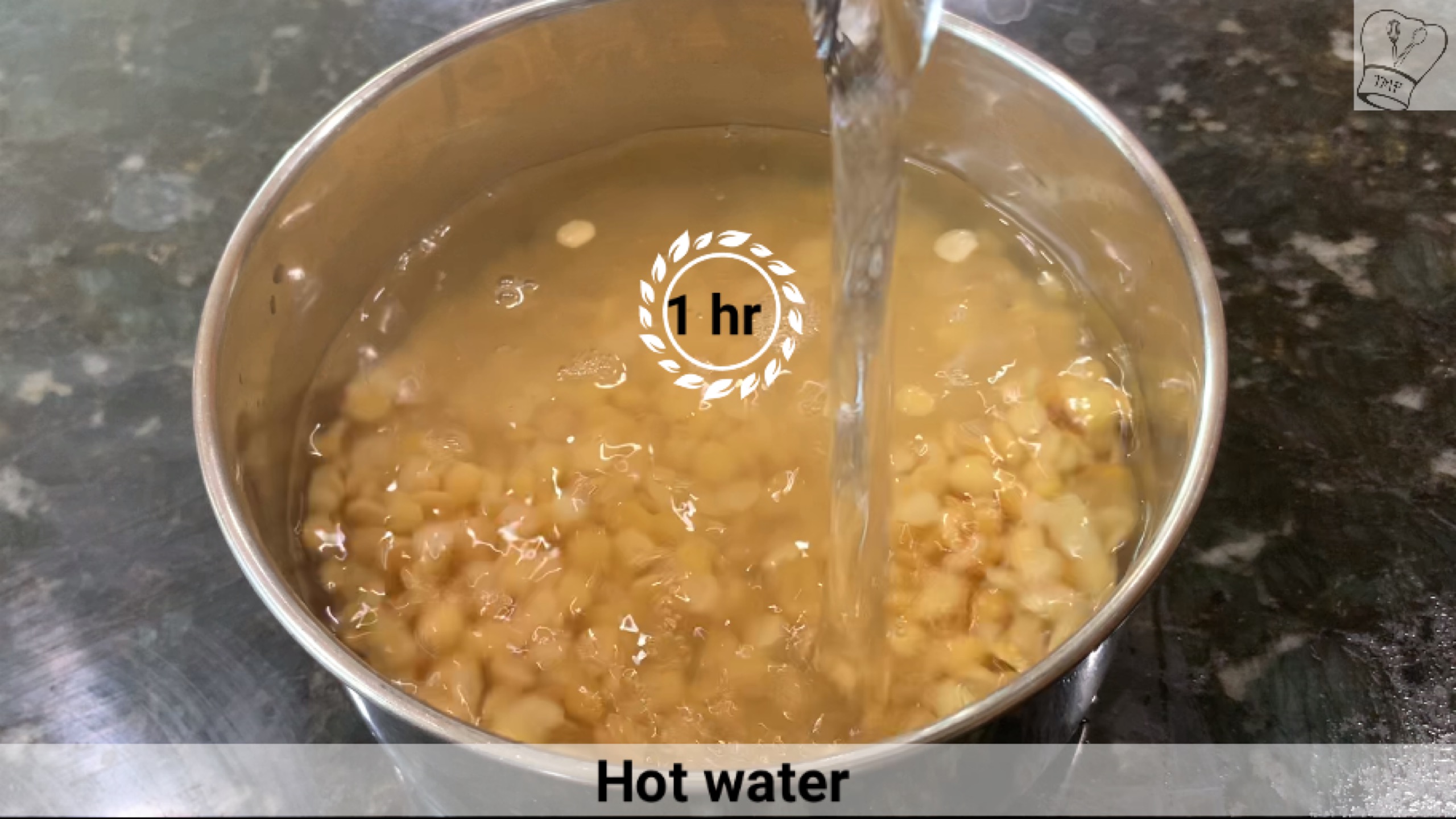
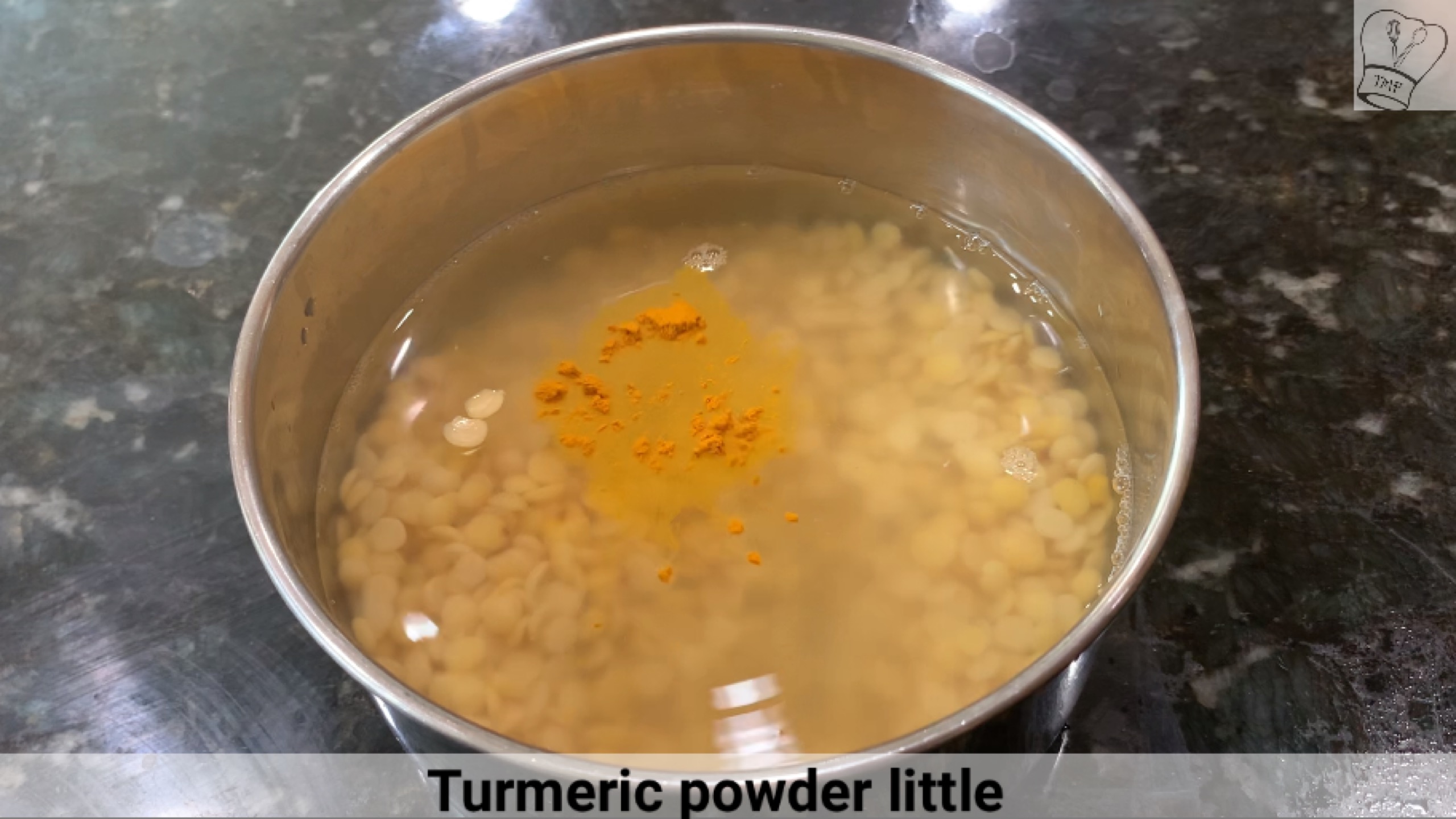
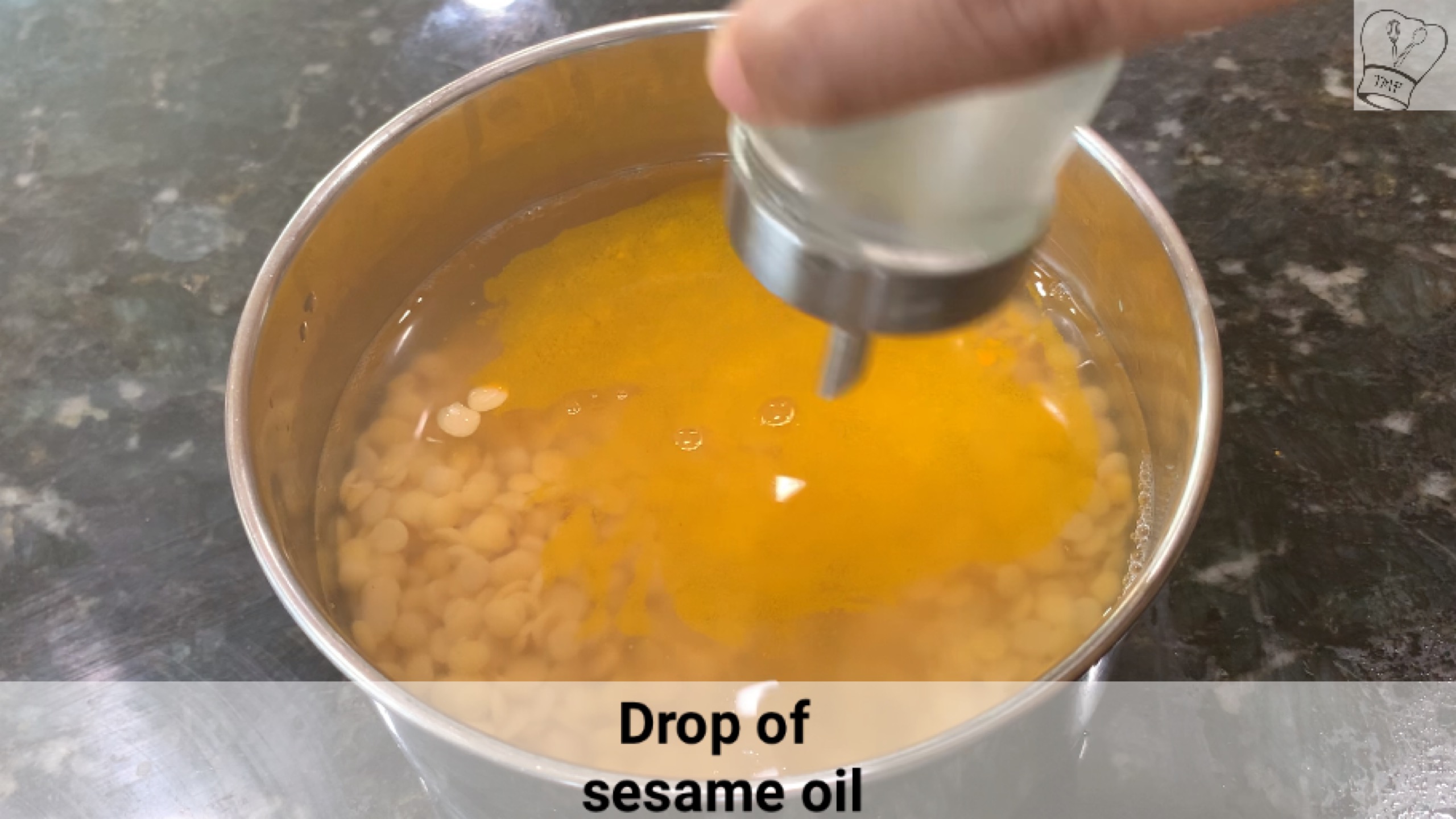
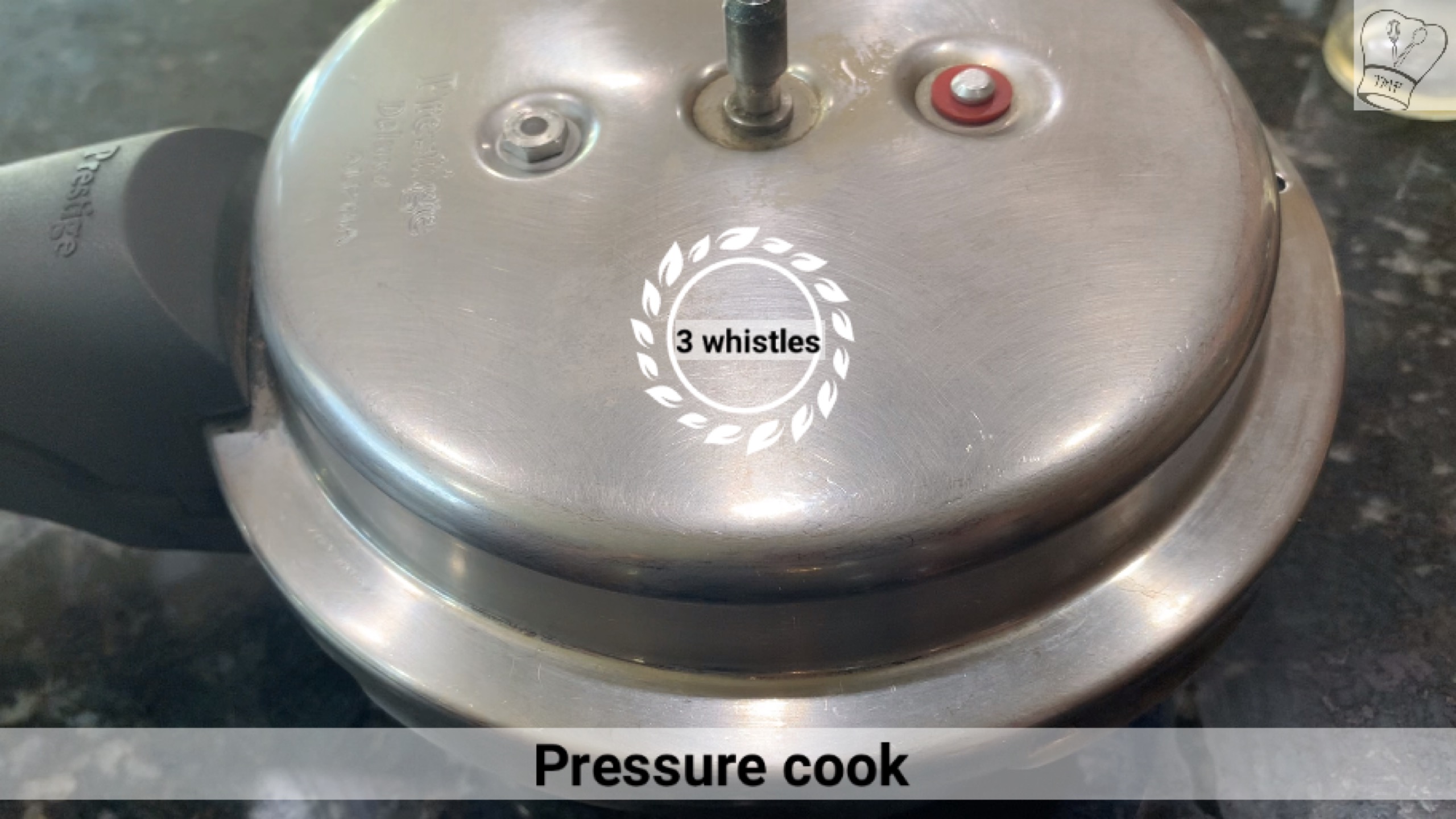
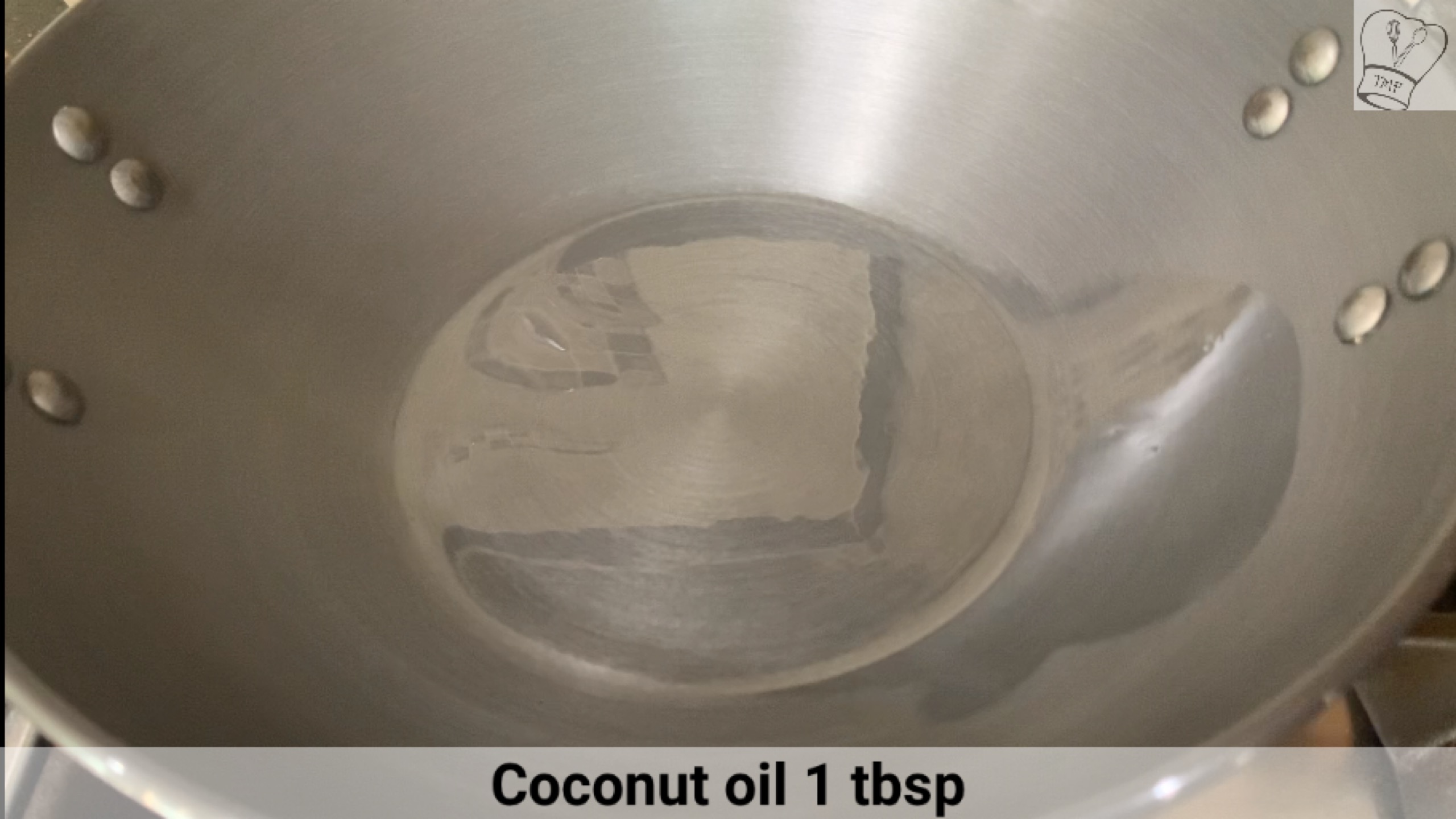
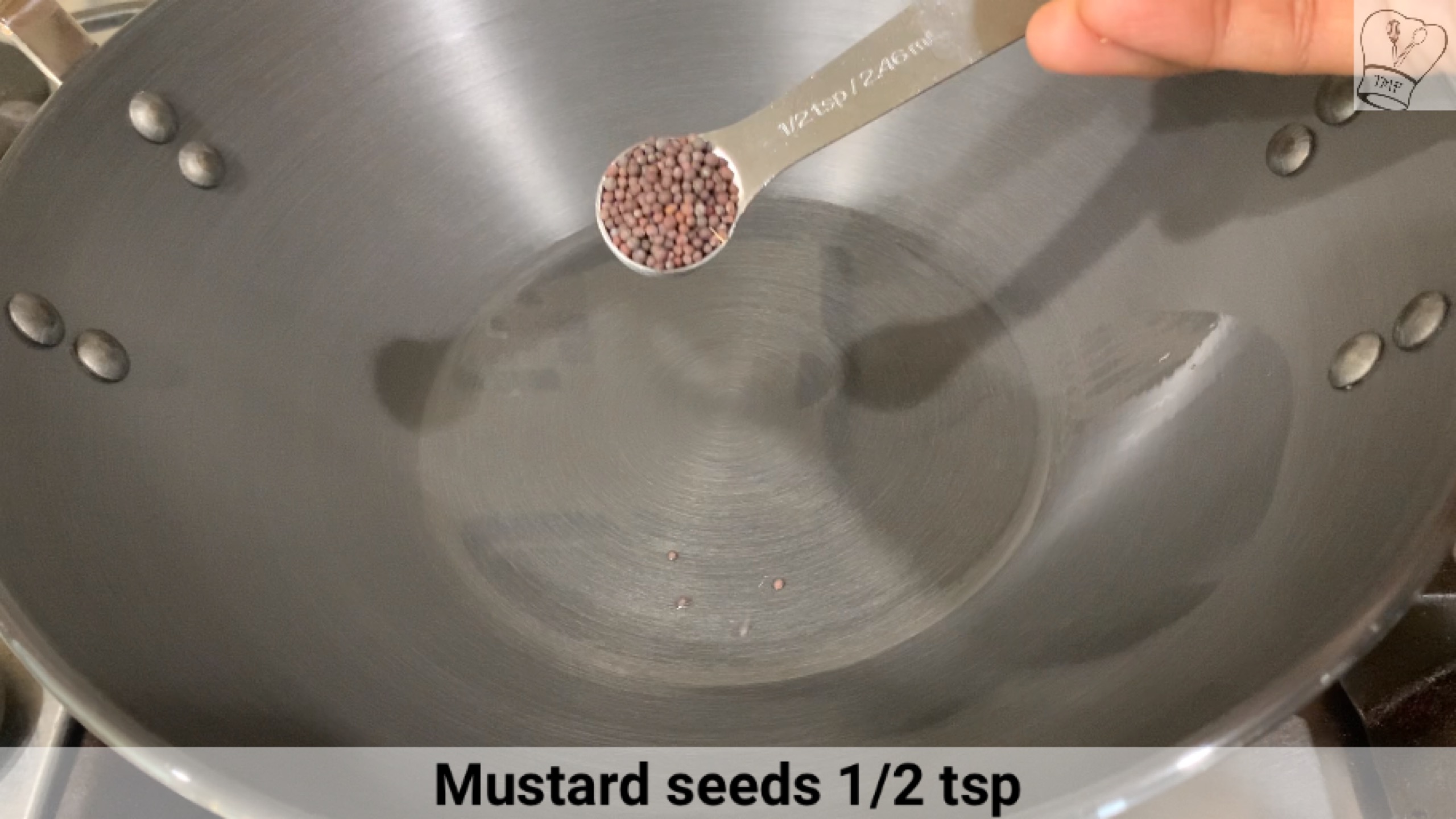
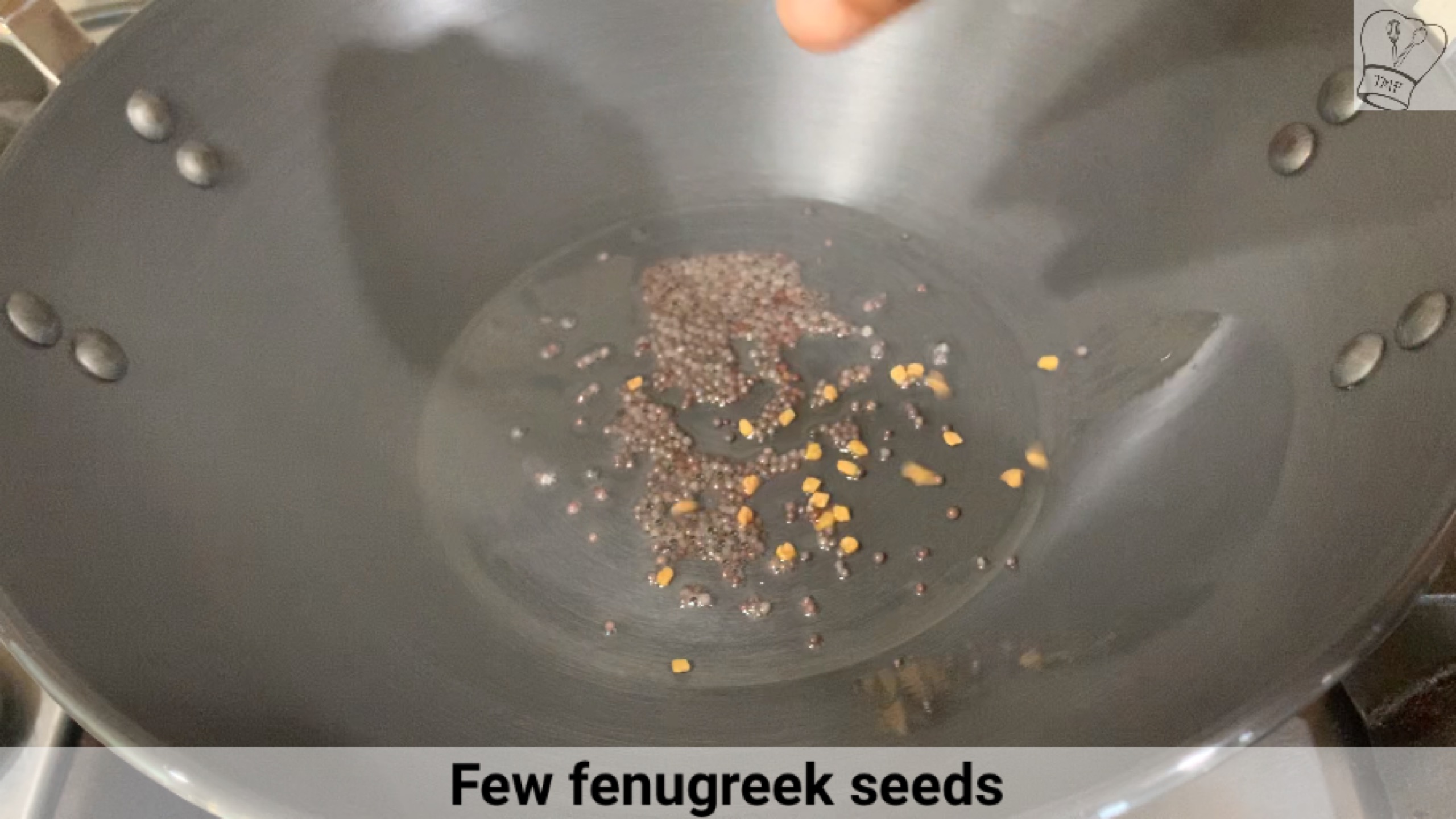
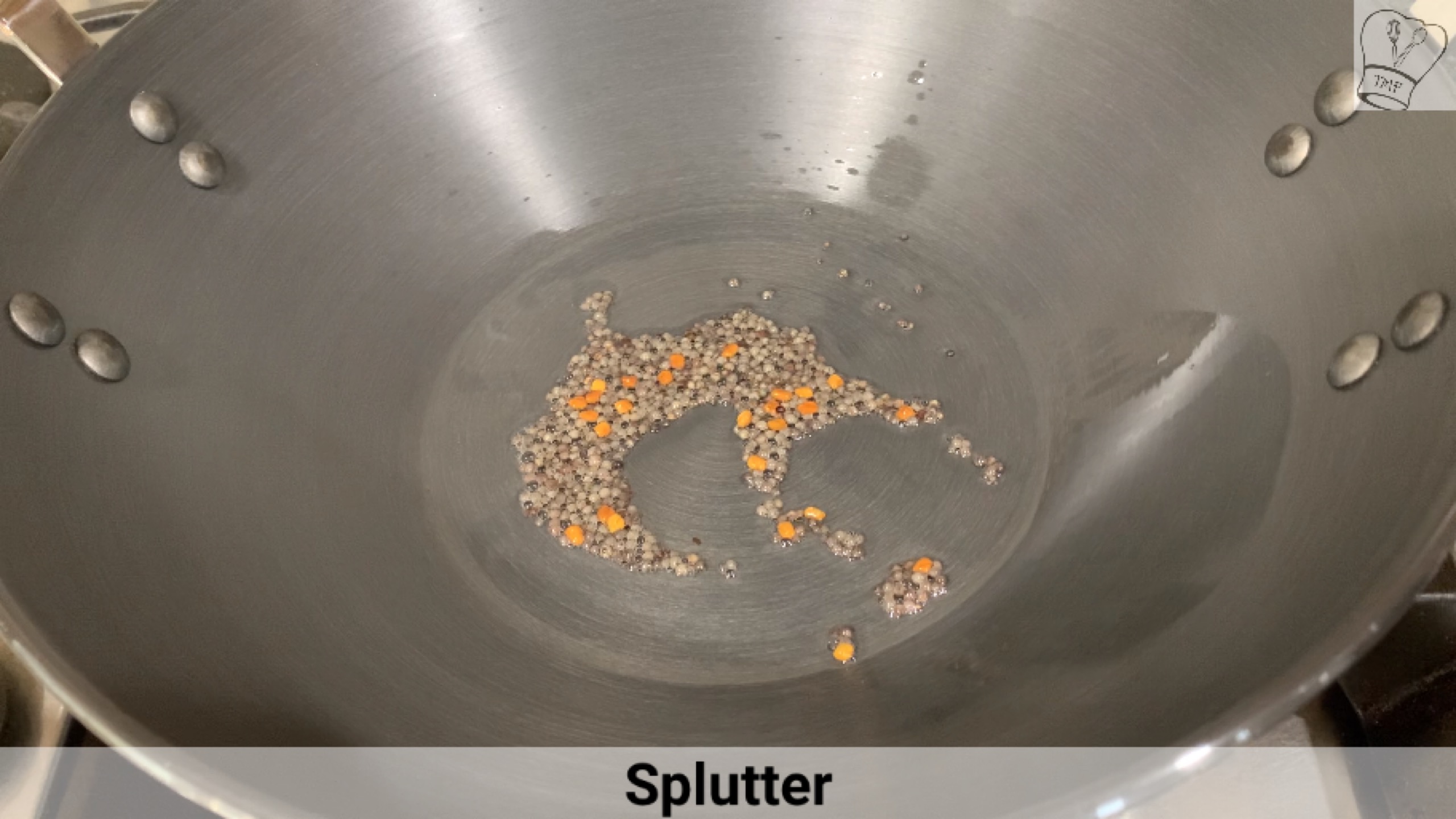
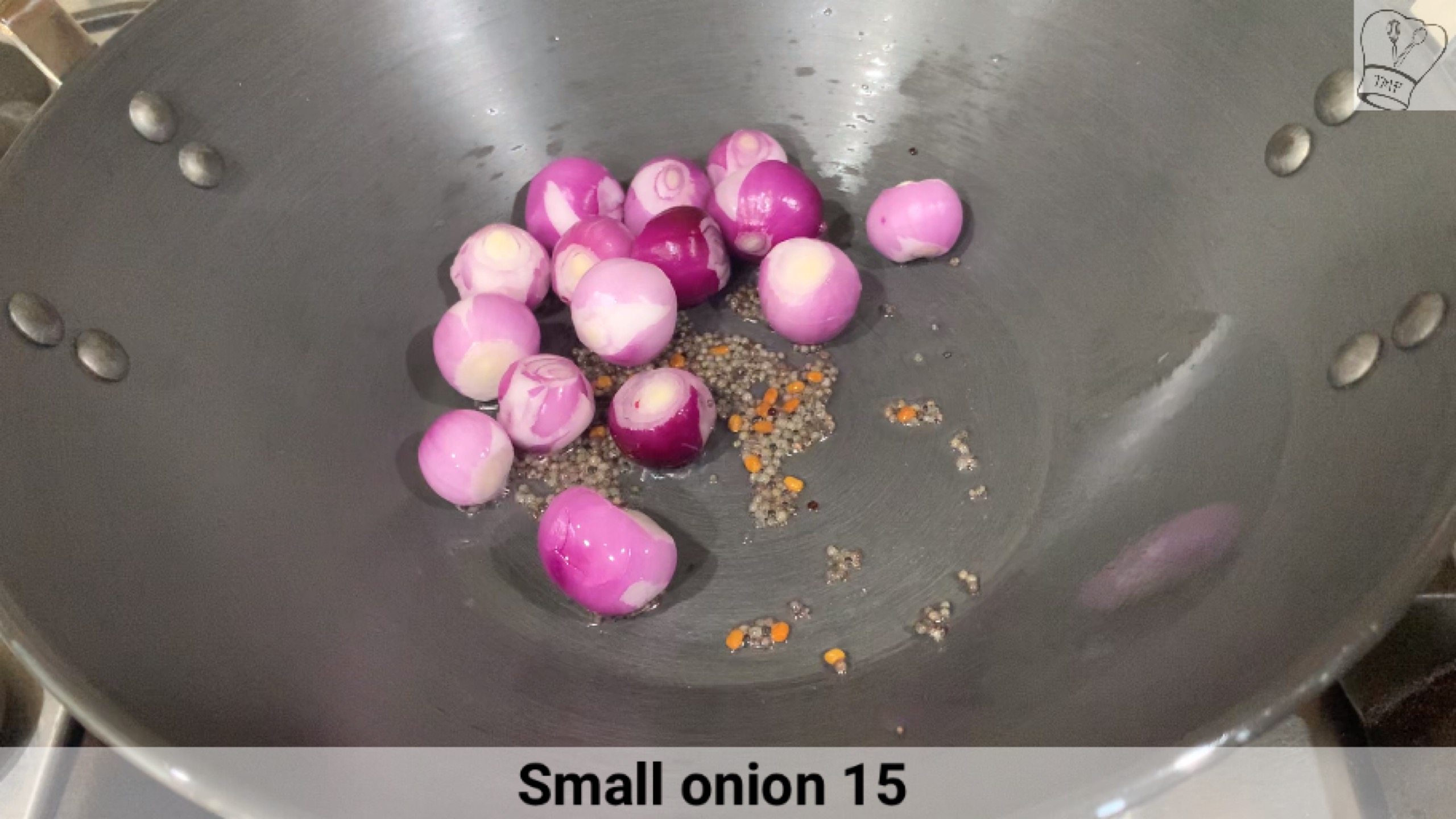



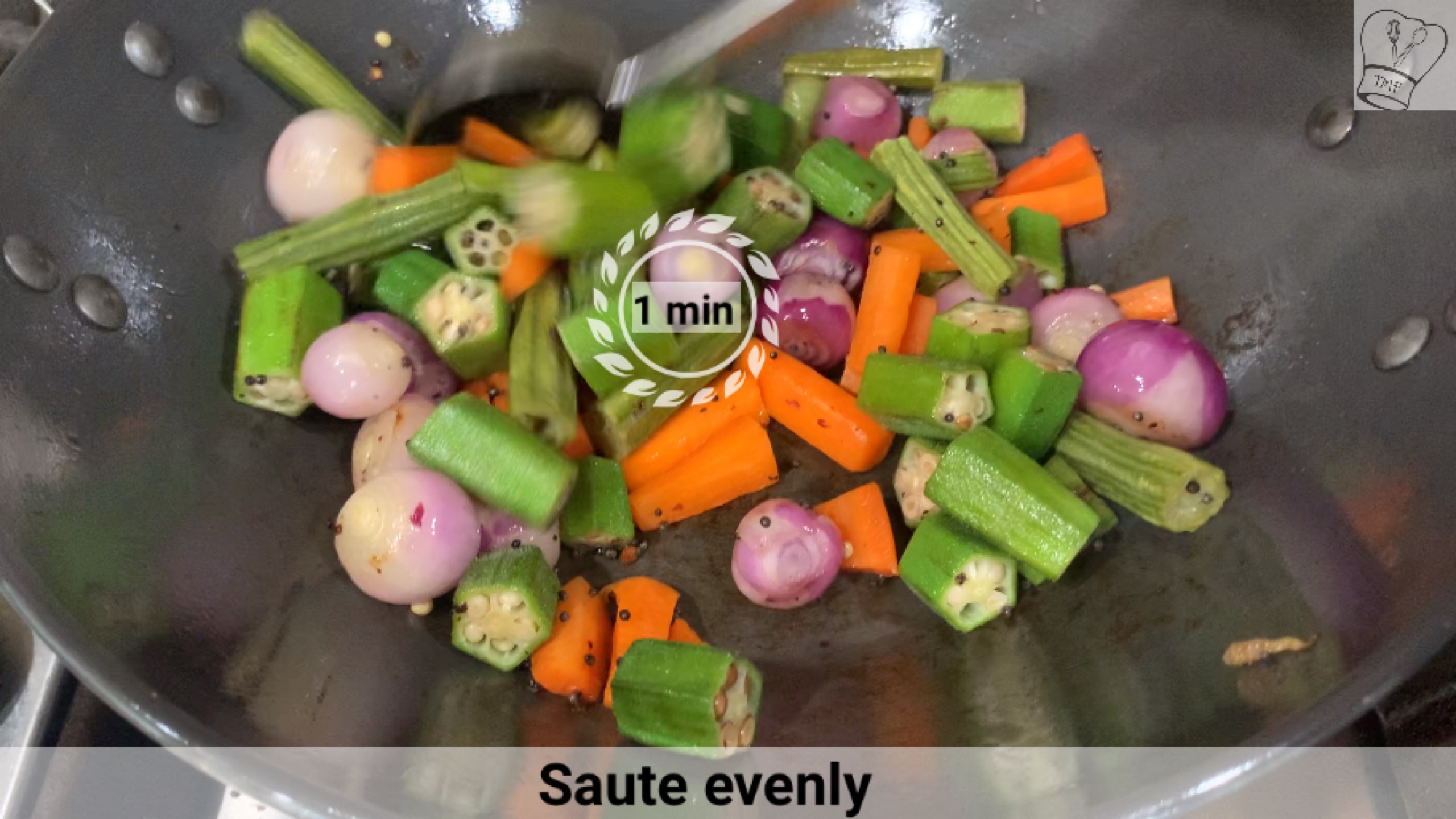
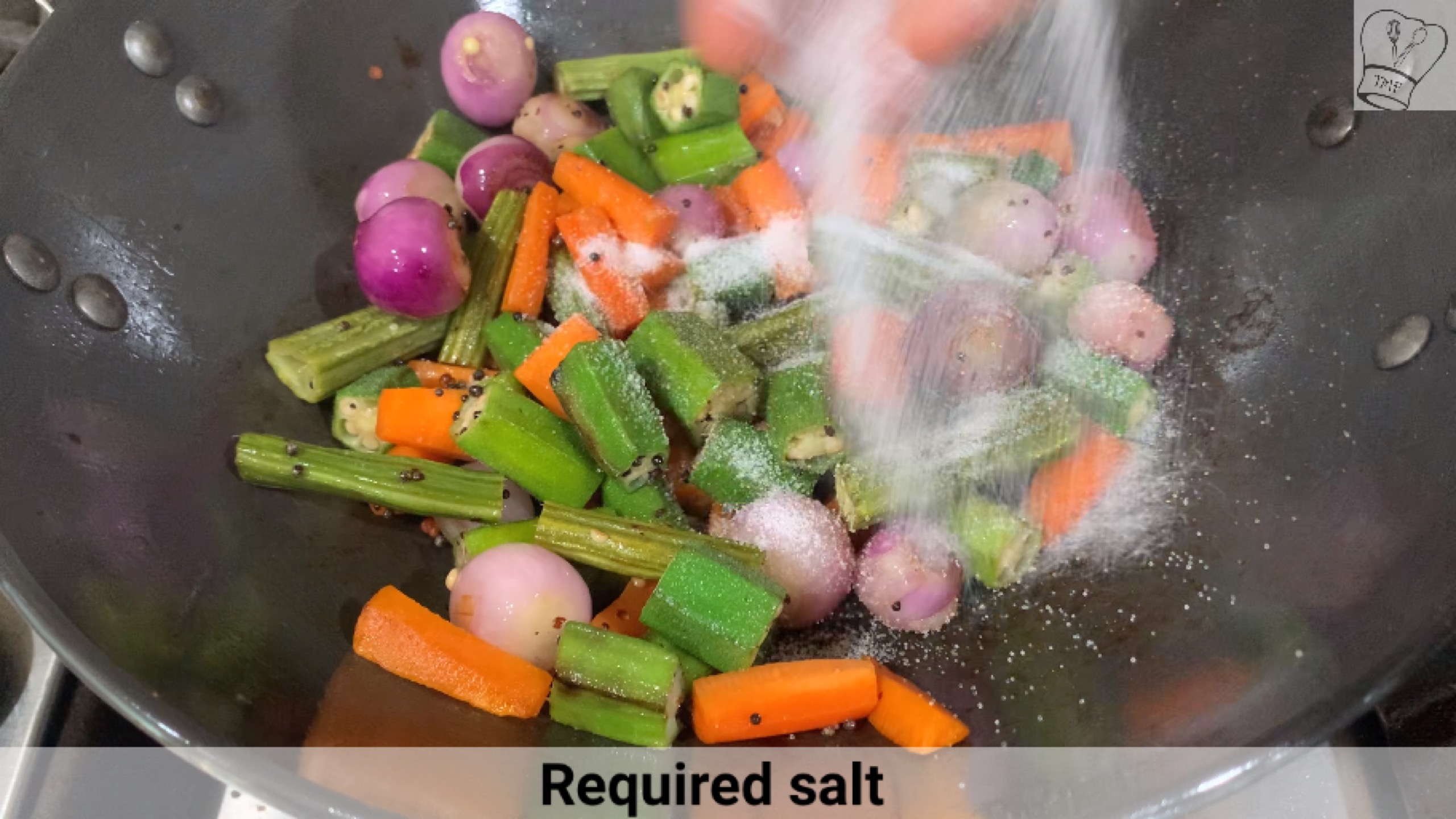
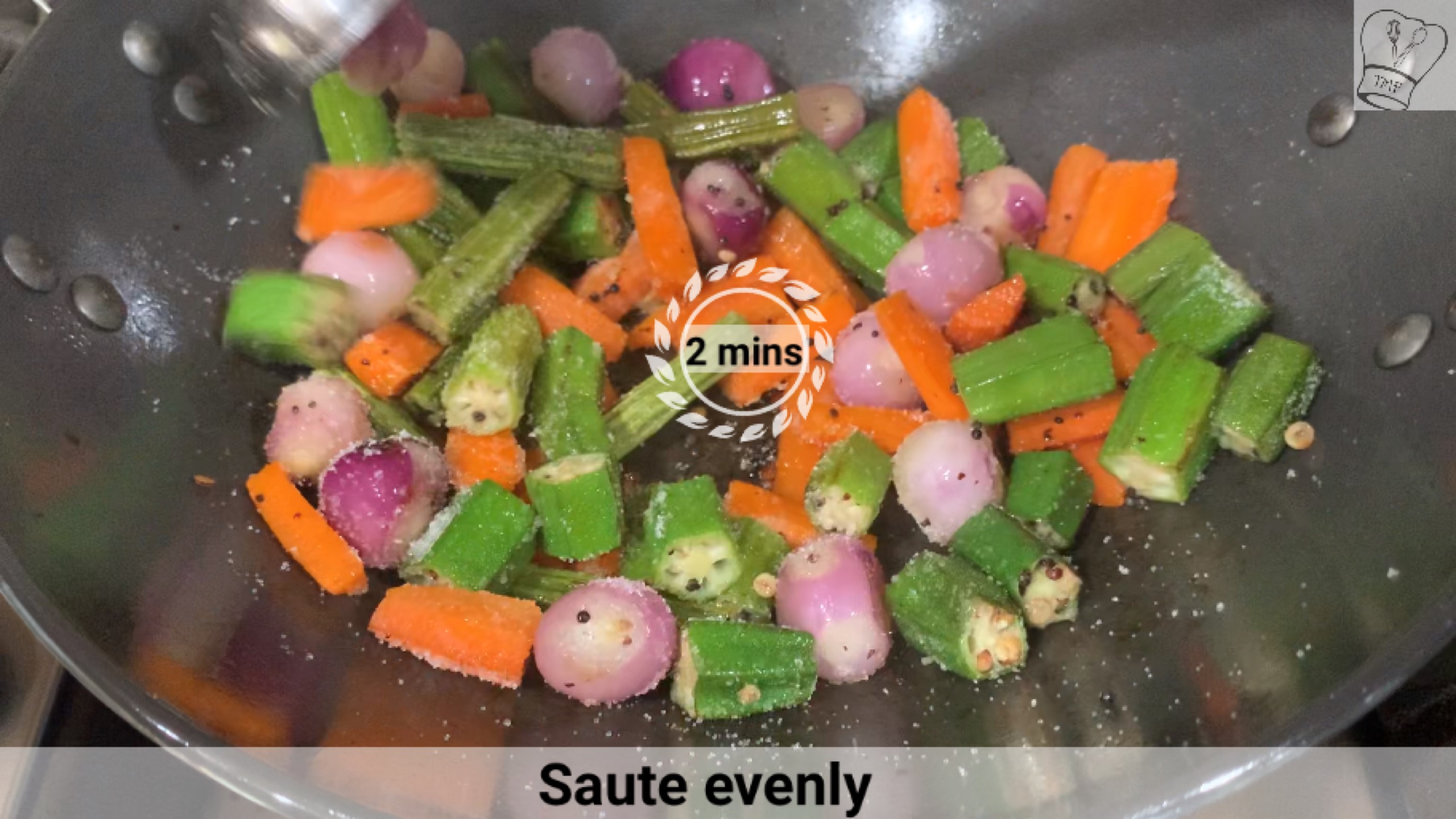
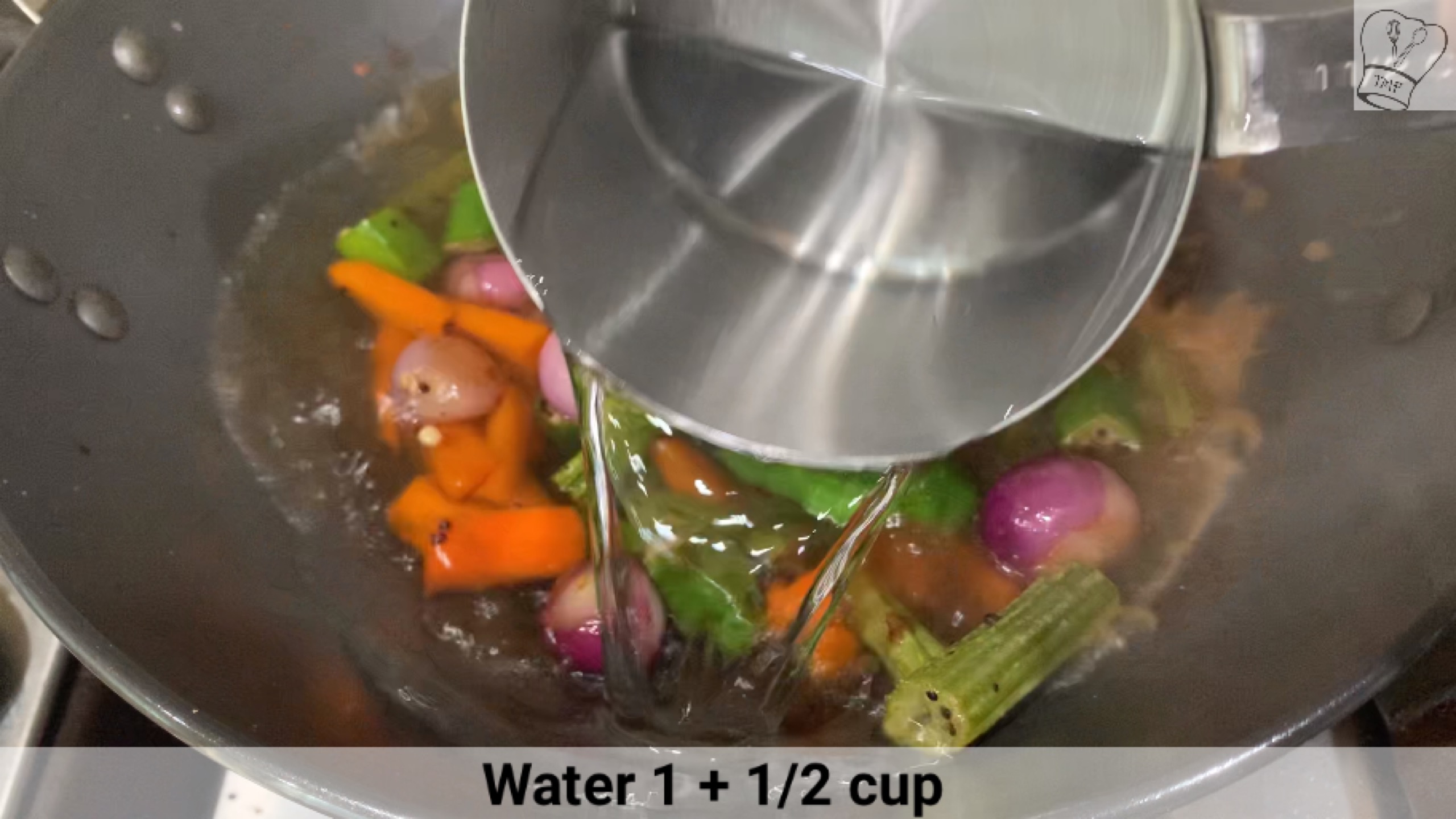

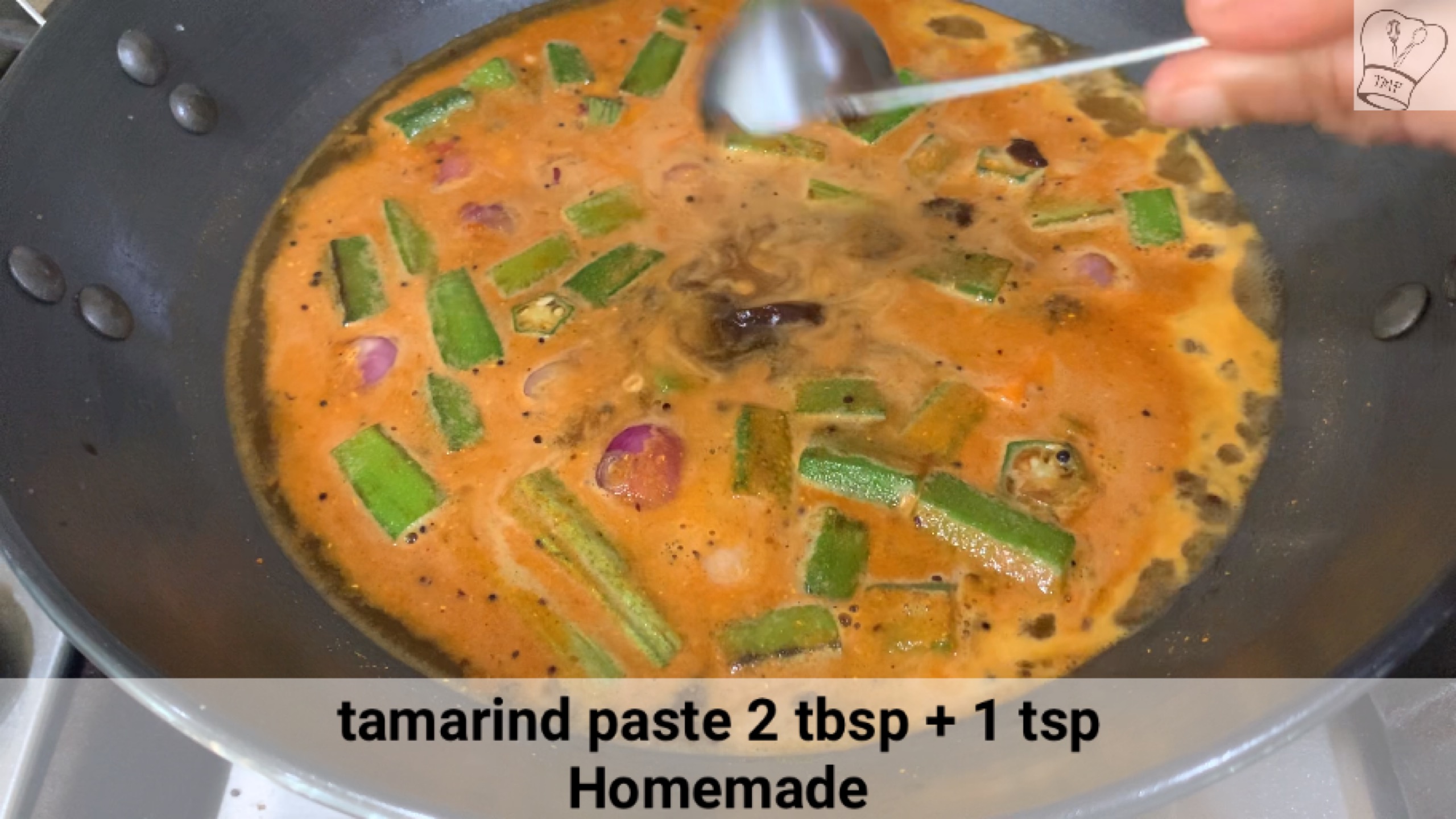
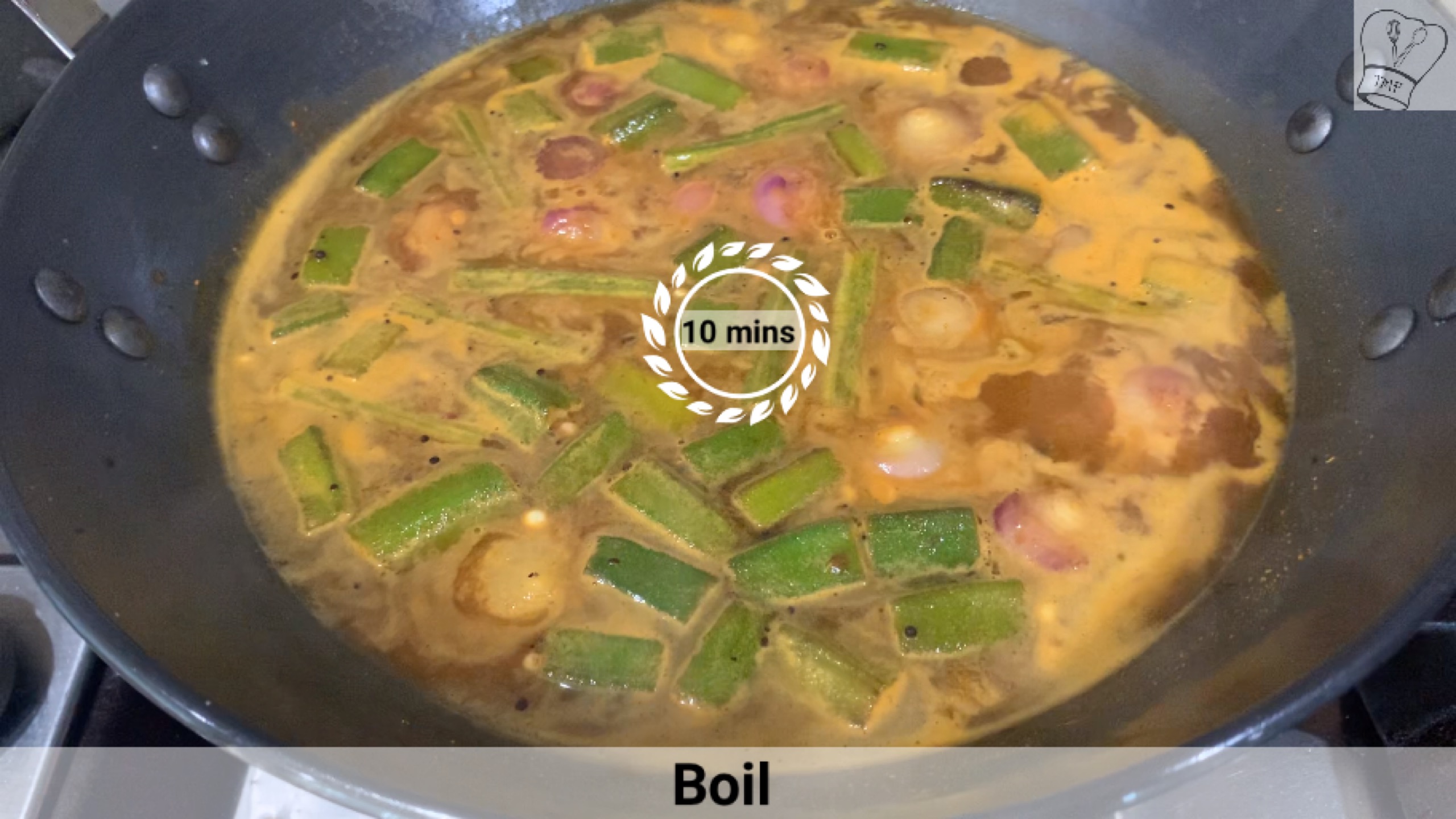
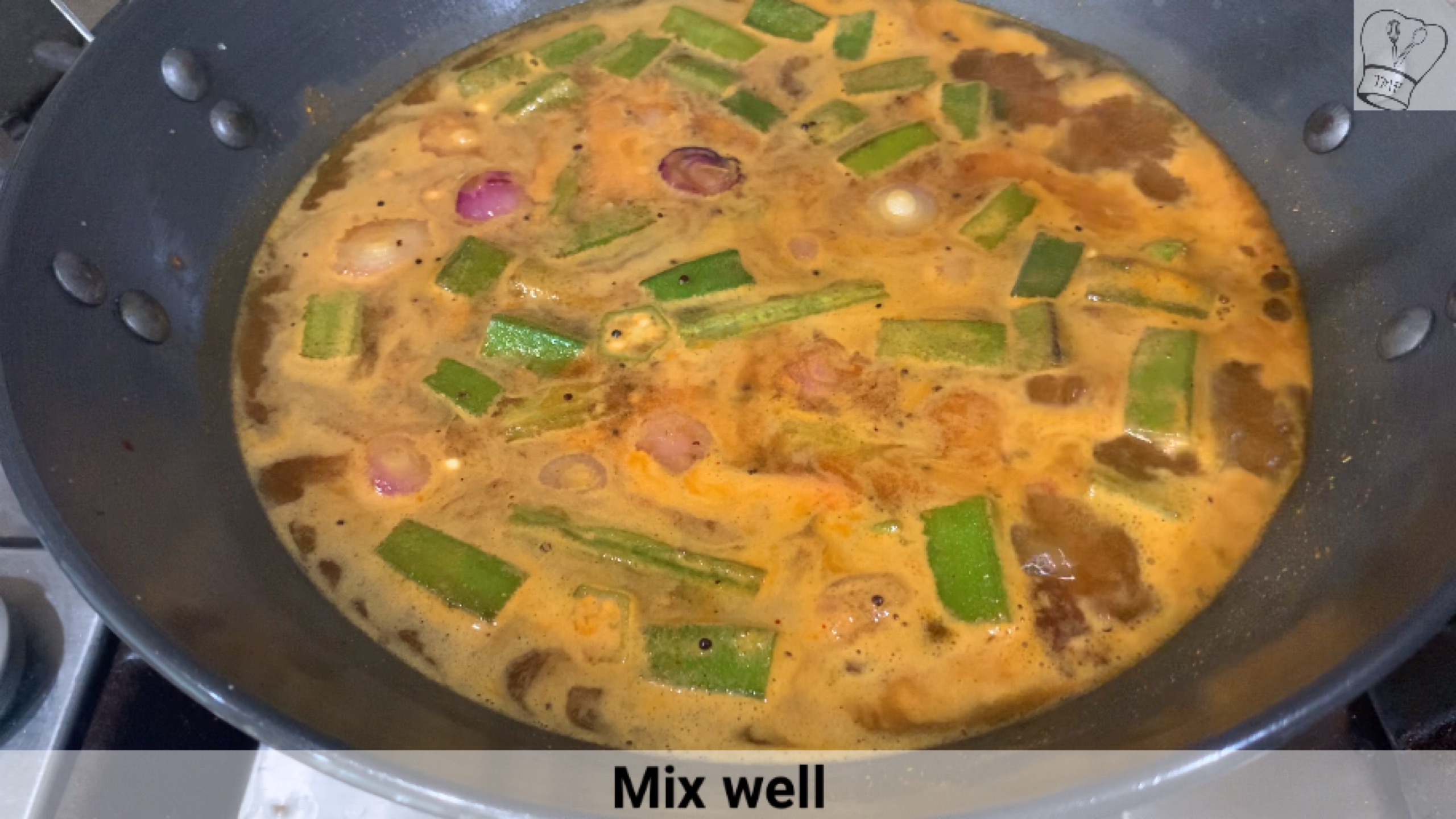
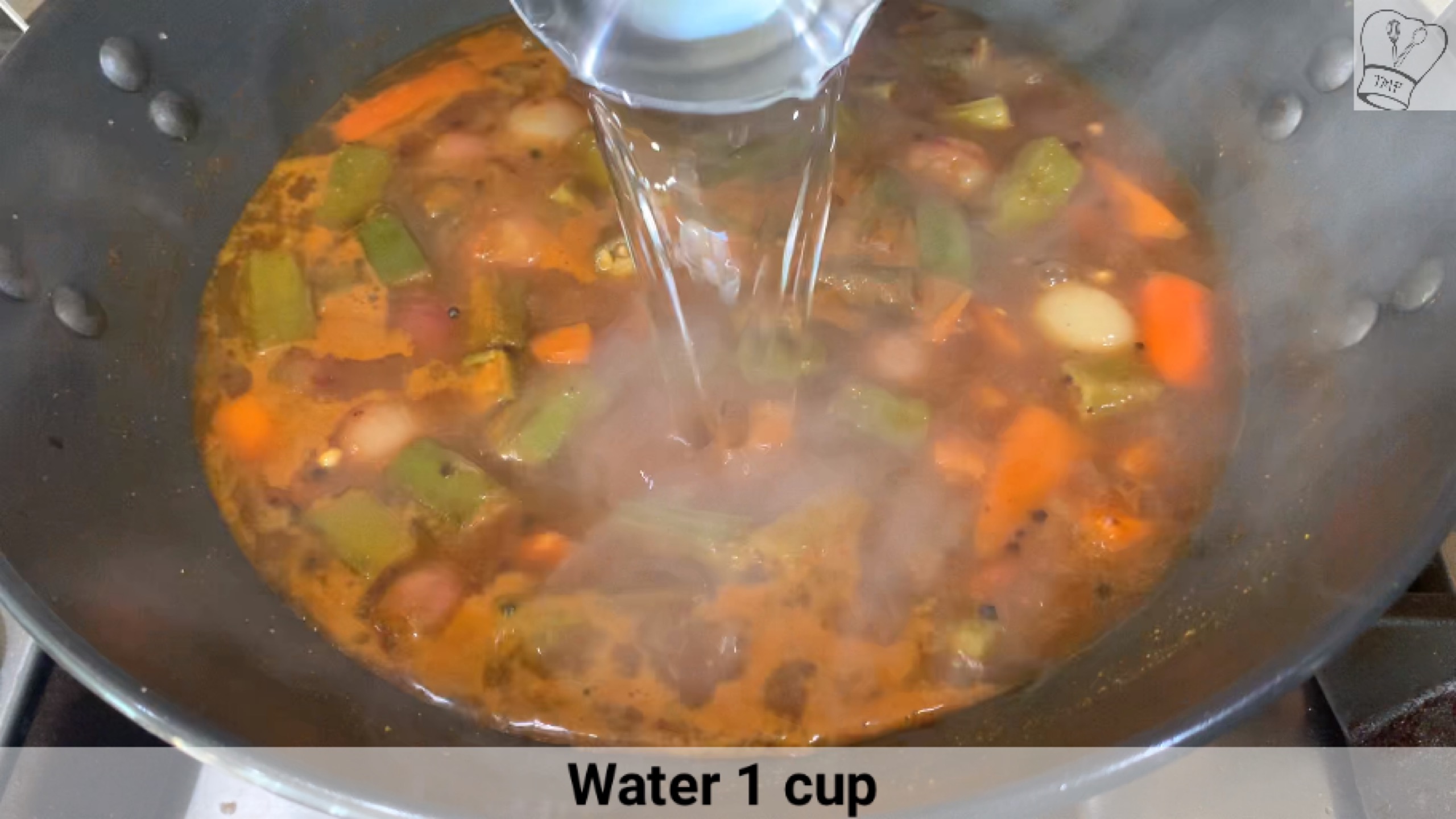

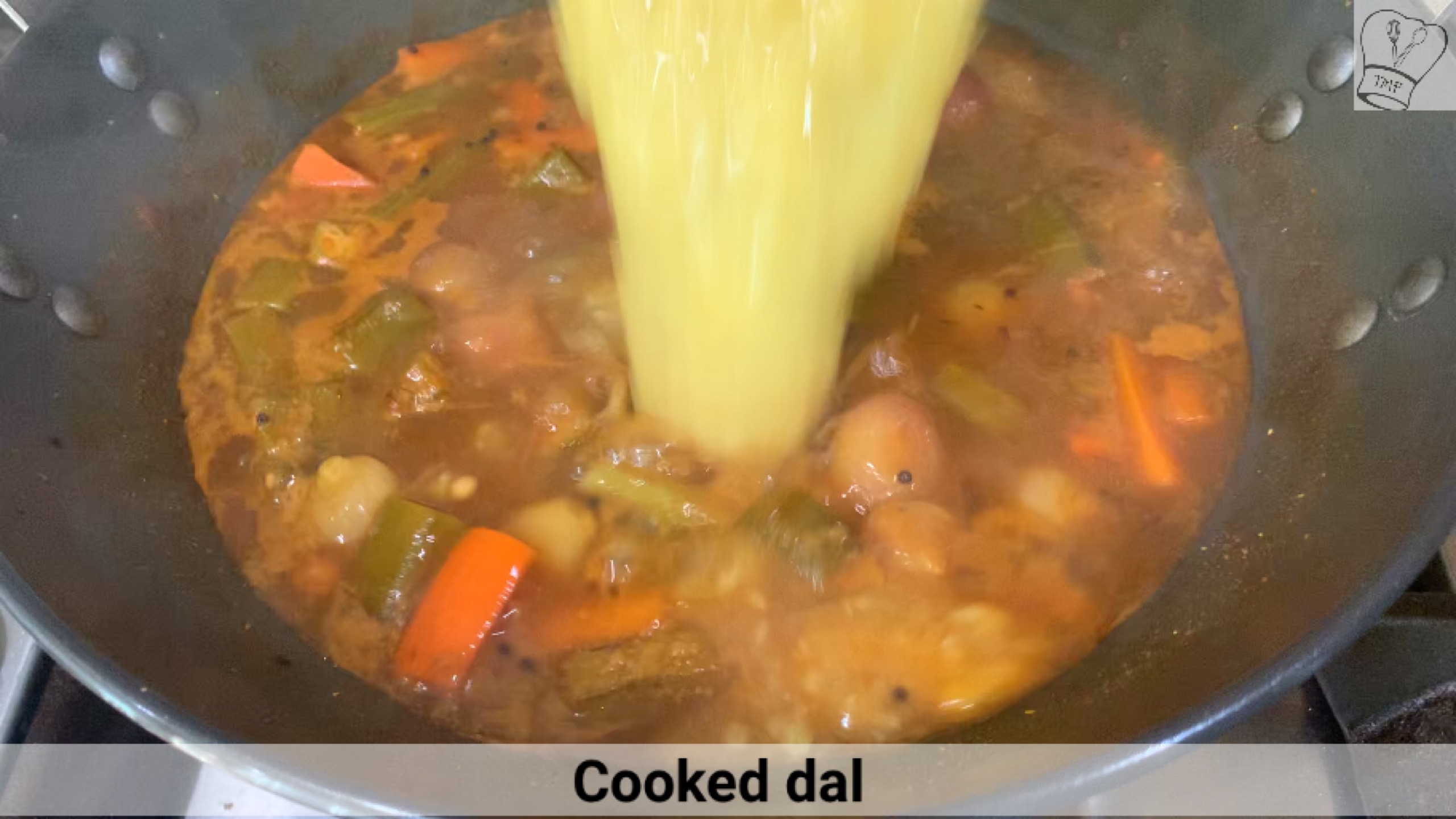
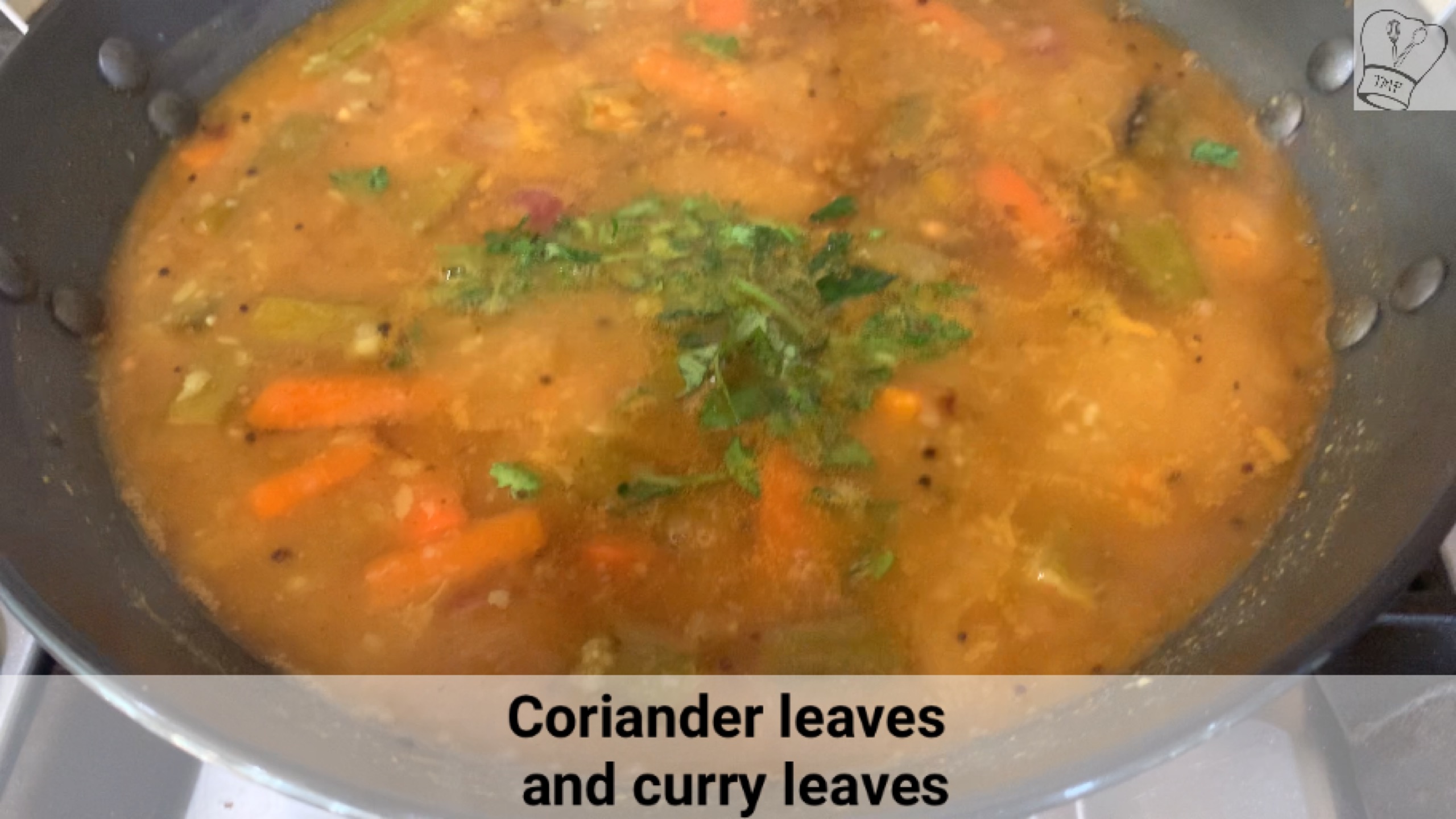
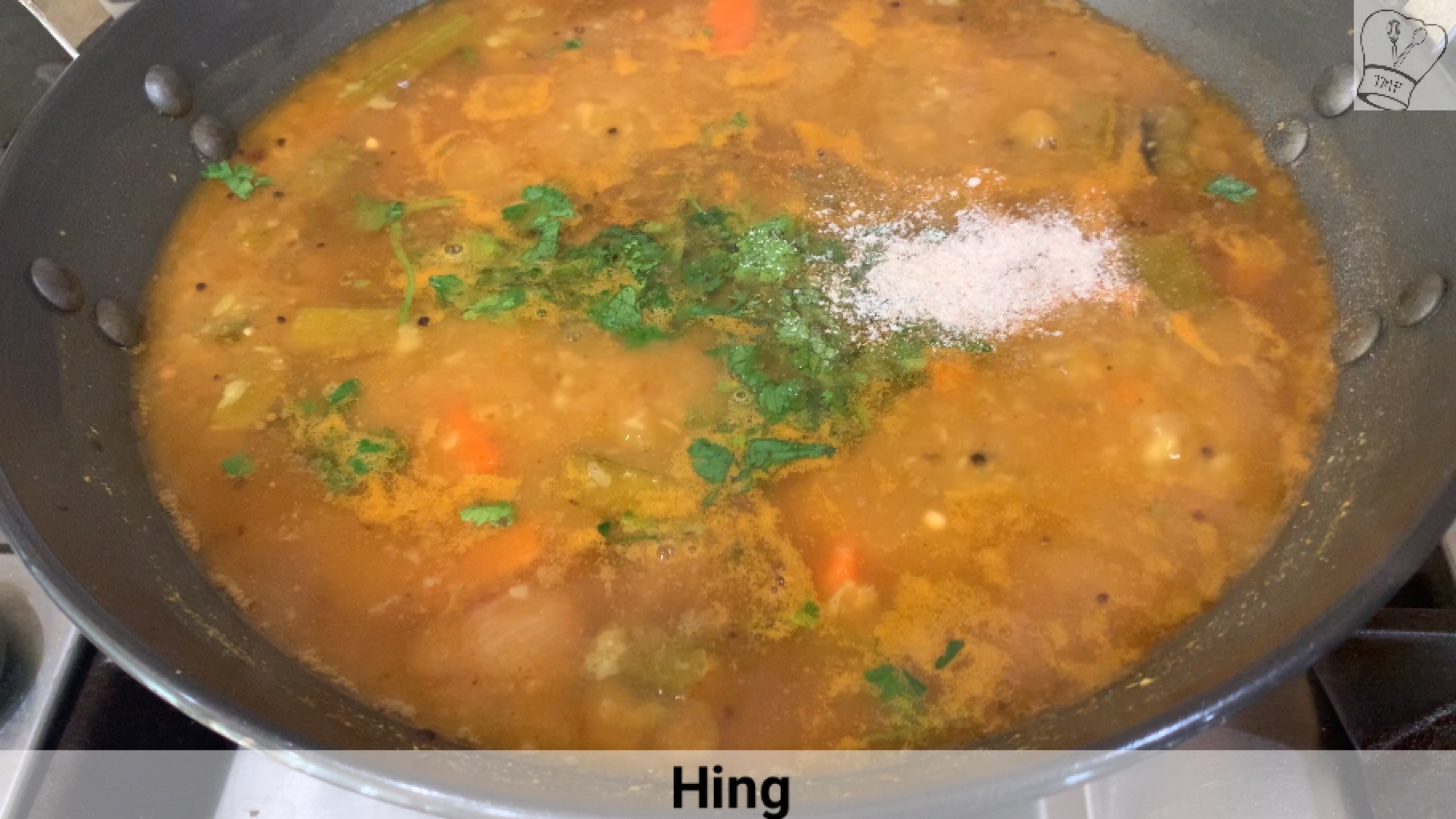
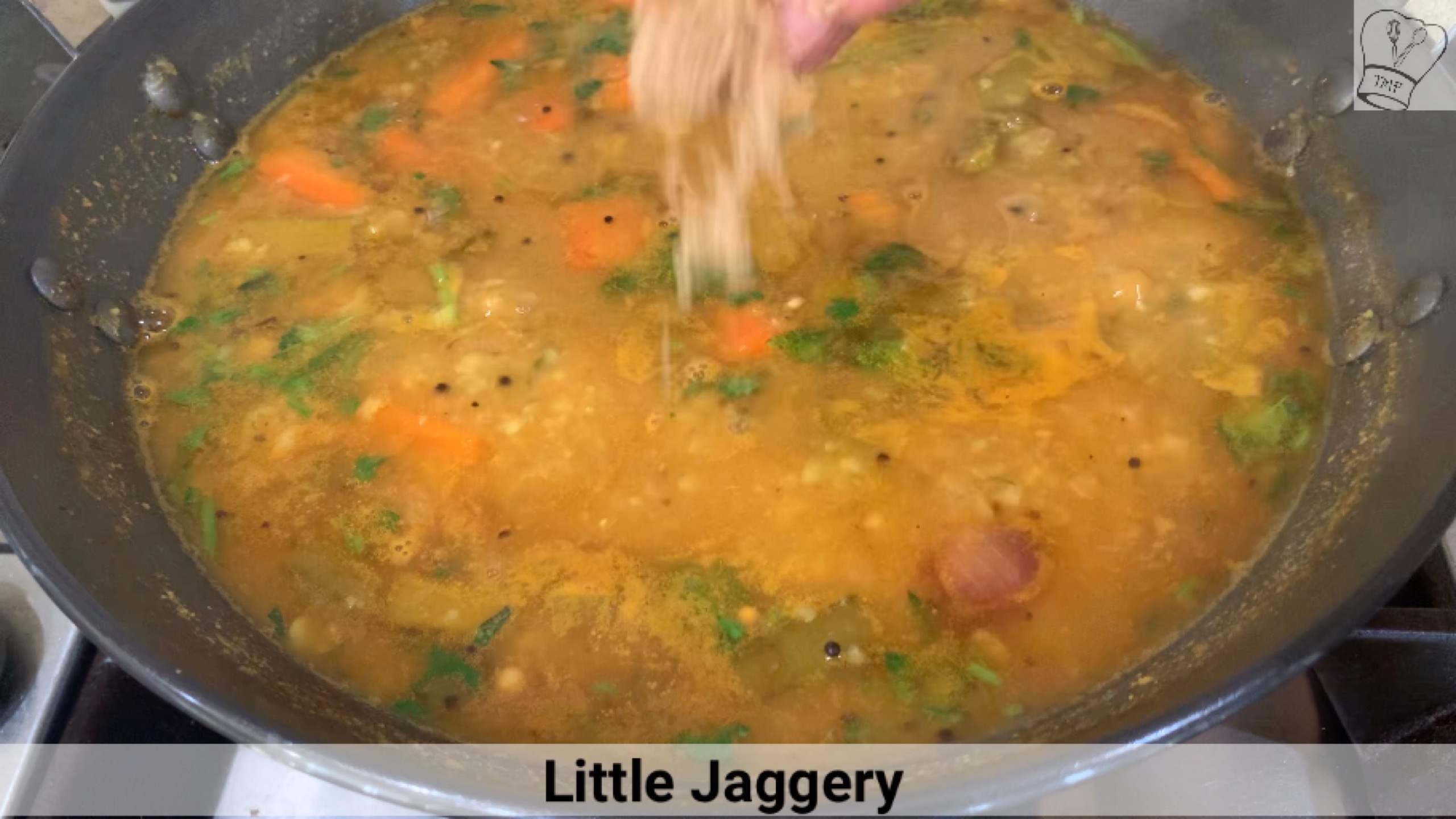
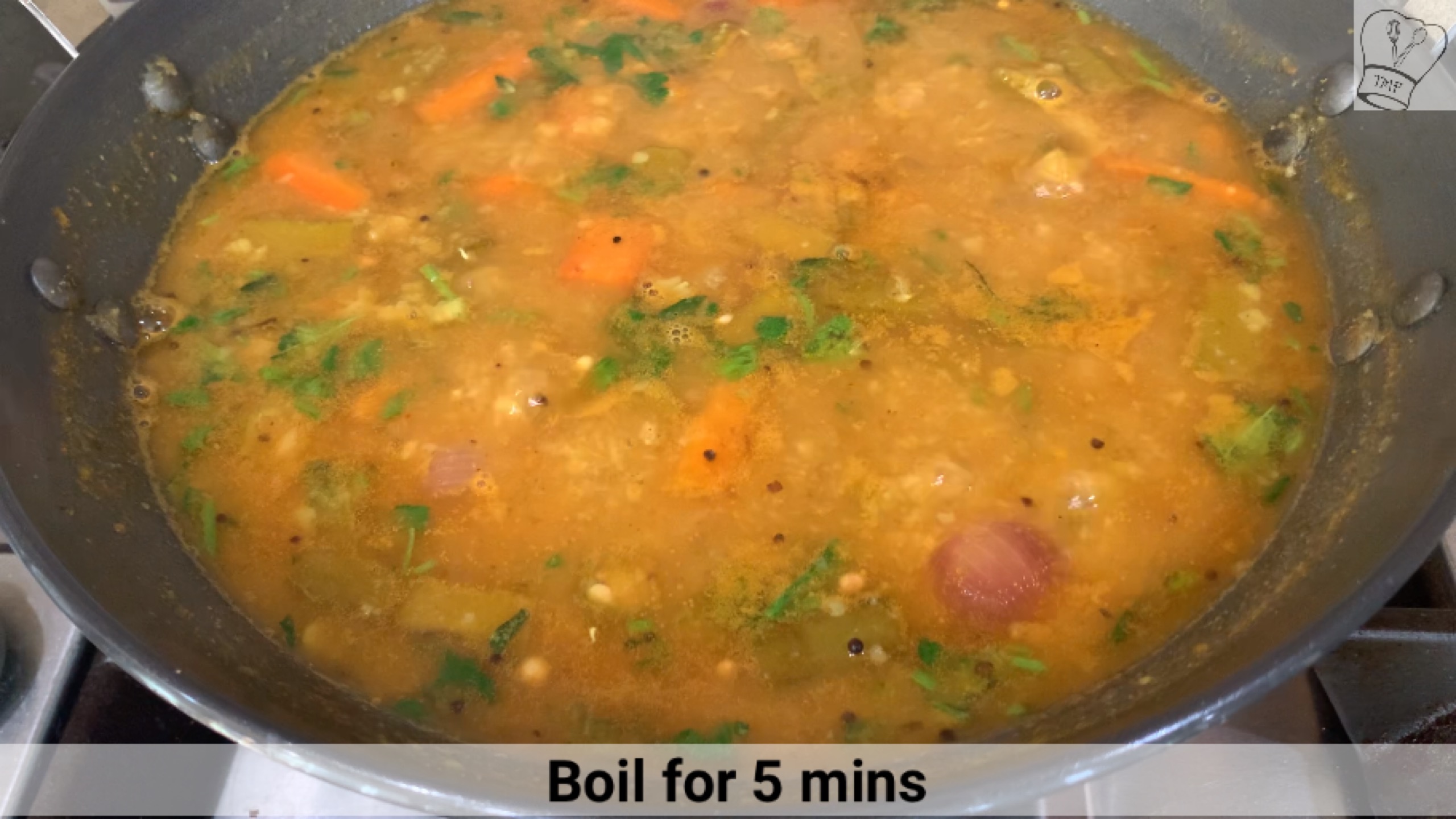
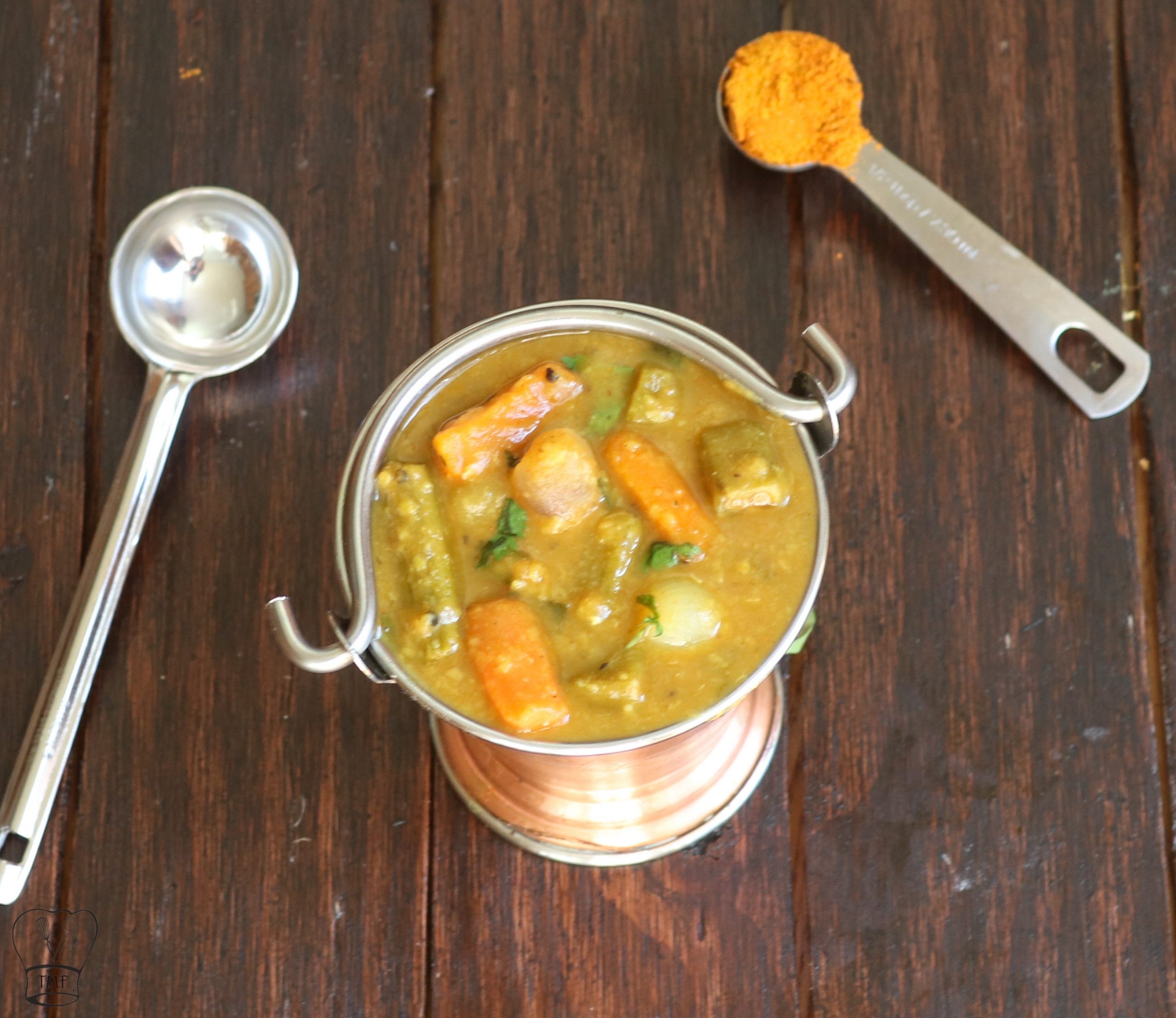
Comments
No Comments